England. A world superpower. Not just in everything else, but also in science, which is world-beating. English spitfire pluckiness destroyed the Huns in two world wars and in Brexit, but also in scientific performance, both impact-factor and money-wise. Brexit Britain will be free of all diseases, because whatever an English scientist does, conclusions remain not affected.
The secret to English science supremacy is not just the limitless capacity of certain English researchers to fabricate exciting results and phony cures, anyone can do that. It is the unique arrogance and corruption of English universities and of British health authorities who regularly decree all data fakeries to be quality science, outside statute of limitations, and verified independently by many citations, while telling whistleblowers to get lost.
It is a game only the crooks can win. And tax payers, charity donors and patients pay the price.
Not matter what you hear from Brexit, it’s not like England is not tolerant and welcoming. Clean of foreign detritus, free Britain can now freely choose what kind of foreigner it will let it. The foreigner must bring the right skill, like Amato Giaccia did, when he arrived to Oxford from Stanford in USA, trailed by a string of questionable research. Brexit and the COVID-19 pandemic showcased what the English ruling elites value most: defrauding and bullshitting the public. Science is just another coffer to plunder in this scam.
I previously celebrated the English science genius, with superior English minds like regenerative medicine enthusiast Martin Birchall, who took over Paolo Macchiarini‘s deadly technology to run some trachea transplants of his own. Birchall was acquitted in full by his own UCL, including for data irregularities, foreign scapegoats were assigned. Also Master of Birkbeck Sir David Latchman, CBE, was saved by UCL from unruly investigators whose reports were overruled by officials to determine no misconduct. Dame Kay Davies, DBE, was defended by her University of Oxford thanks to statute of limitations of 3 years for research misconduct charges, and by the publisher Oxford University Press where she as Editor-in-Chief retaliated against a fraud whistleblower. Paul Workman and Alan Ashworth, current and former director of ICR London, were both absolved in full, nothing at all worth retracting was found, while minor characters (not their protegees though) got the blame. Richard Marais of Cancer Research UK in Manchester weathered a research fraud scandal in his lab and a mountain of bullying accusations, he is still director of the institute.
Now, I shall celebrate more such talents, based on the sleuthing of Clare Francis. Cancer is cured, brain diseases vanquished, all thanks to the English scholars I want you to admire. Please raise, tuck in your shirt and comb your hair. The honour is all yours:

Nick Lemoine, FRCPath FMedSci
We shall start with Nicholas Lemoine. This cancer researcher is professor at the Queen Mary University of London and director of the Cancer Research UK Barts Centre. He is also an extremely high-ranking expert at the MRC (Medical Research Council), which means Dr Nick decides which biomedical researchers in UK gets funded and which don’t:
“He has served as Chair of the Clinical Training and Career Development Panel at the Medical Research Council, and as Vice-Chair of the MRC Stratified Medicine Expert Panel. He has previously served as Chair of the MRC Stem Cell Strategic Grant and Fellowship Panels, and has been a member of the MRC’s Molecular & Cellular Medicine Board.“
As medical director of NIHR Clinical Research Network, Dr Nick is now in charge of UK’s COVID-19 response:
So what kind of science are you, a humble British scientist seeking to eke out a meagre grant from MRC or NIHR, expected to deliver in order to impress Professor Lemoine? Well, you could study from his own papers, here is one:
Iman El-Hariry, Massimo Pignatelli, Nicholas R. Lemoine FGF-1 and FGF-2 regulate the expression of E-cadherin and catenins in pancreatic adenocarcinoma International Journal of Cancer (2001) DOI: 10.1002/ijc.1515
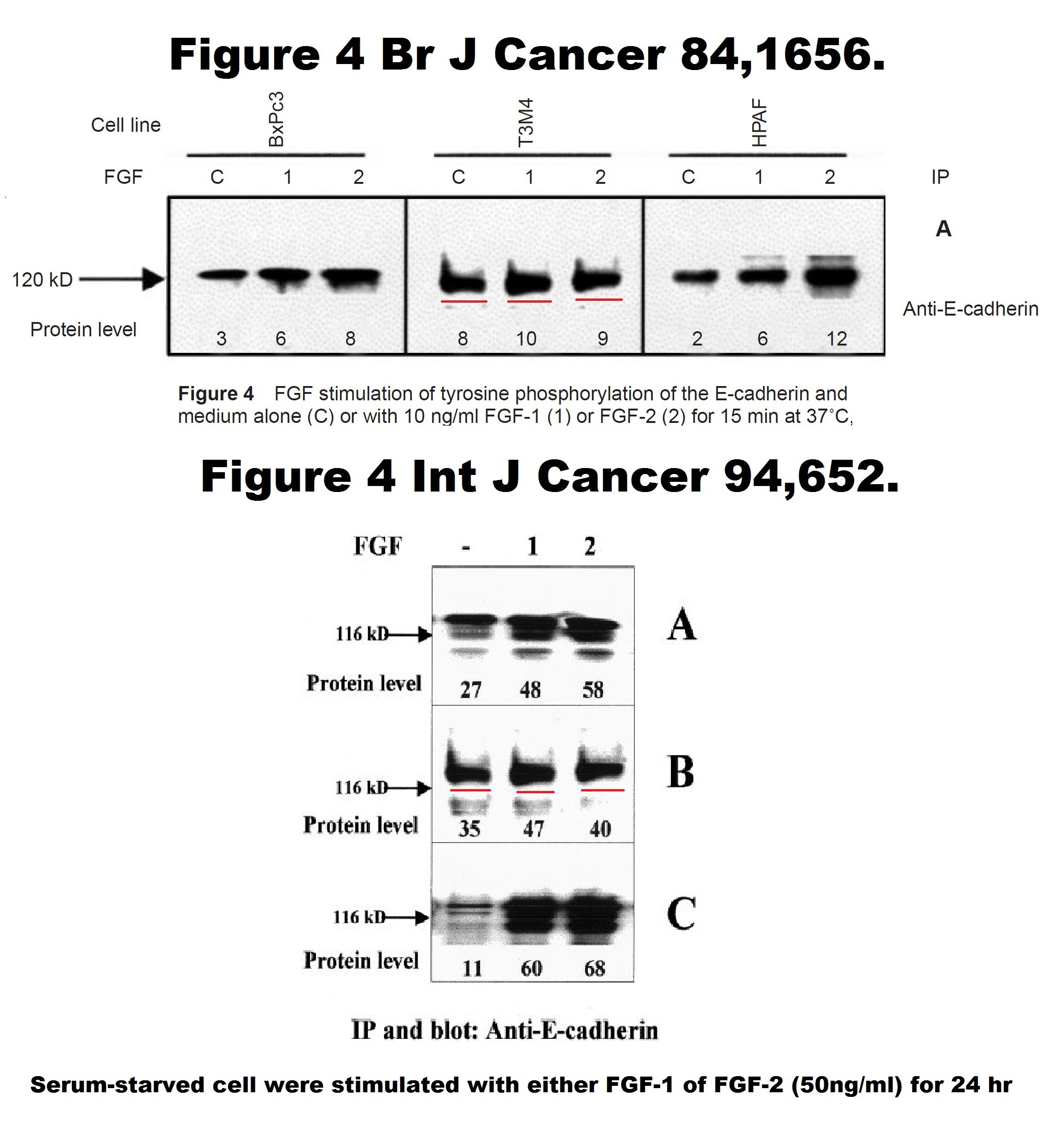
As you see, the Figure 4 is fake, it has 3 cloned bands. Which means, the conclusions are not affected. A correction was issued by the publisher Wiley in 2019:
“There is an error in the experimental conditions reported for the data presented in Figure 4 panel B. We apologize for these circumstances, which required clarification of the data.”
As it happens, Ashworth’s mentee and first author on a bunch of hilariously fake papers, Sarah Martin, is presently faculty member and Deputy Centre Lead at the Lemoine-ruled Bart’s and, this is really cruel: director of the graduate school. Now you see which qualifications you need to get employed at Barts, plus they probably sack PhD students for refusing to fake data there.
Maybe they use this paper by Limoine and his Barts colleagues to teach the students how to do cancer research properly:
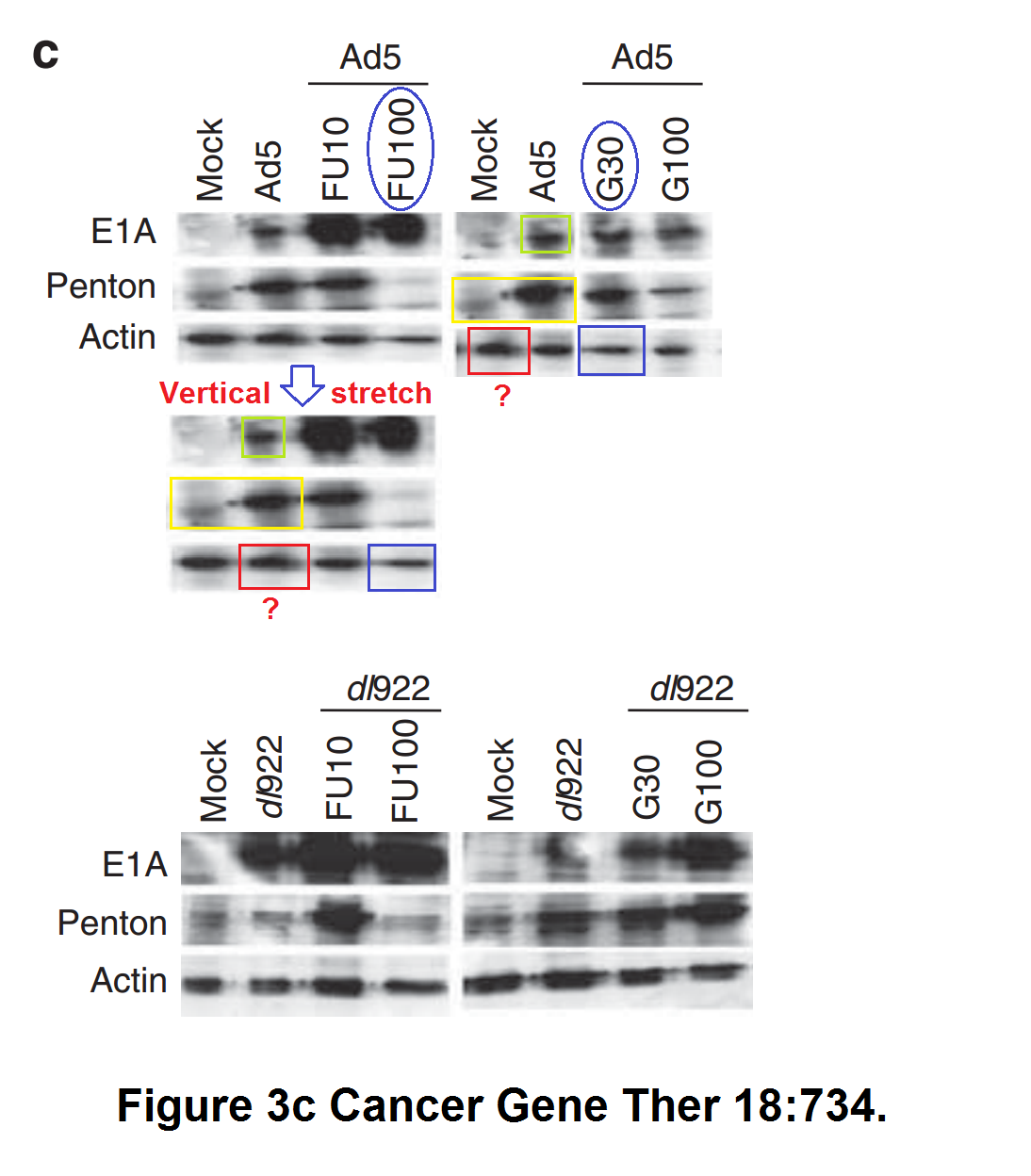
M Bhattacharyya, J Francis, A Eddouadi, N R Lemoine, G Halldén An oncolytic adenovirus defective in pRb-binding (dl922–947) can efficiently eliminate pancreatic cancer cells and tumors in vivo in combination with 5-FU or gemcitabine Cancer Gene Therapy (2011) doi: 10.1038/cgt.2011.45
Nothing was done. The Editor-in-Chief of this Nature Research Group journal is another professor in England, Georgios Giamas, owner of his own PubPeer record, and protege of the controversial, yet perfectly safe in his job, Imperial College professor Justin Stebbing. Giamas also holds a visiting professorship at Imperial, and he will definitely never do anything about the following paper by Limoine in Cancer Gene Therapy:
I A McNeish, T Tenev, S Bell, M Marani, G Vassaux, N Lemoine Herpes simplex virus thymidine kinase/ganciclovir–induced cell death is enhanced by co-expression of caspase-3 in ovarian carcinoma cells Cancer Gene Therapy (2001) doi: 10.1038/sj.cgt.7700305
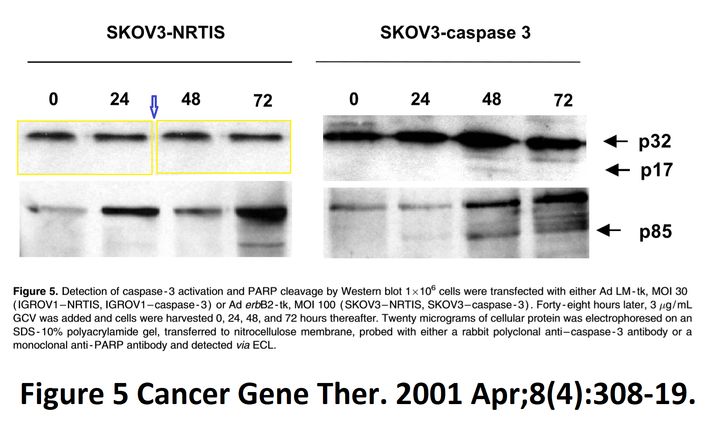
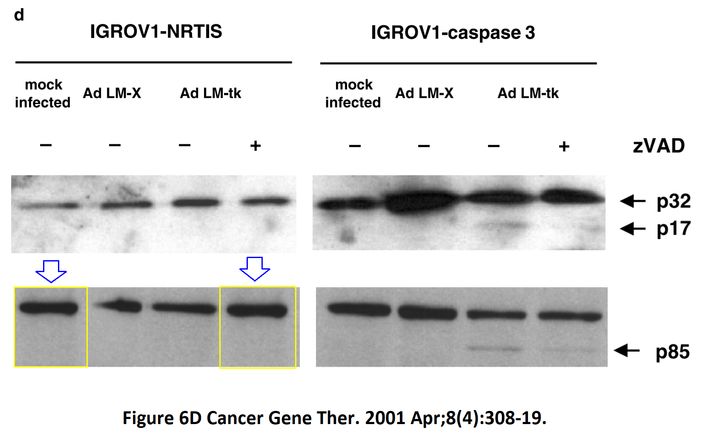
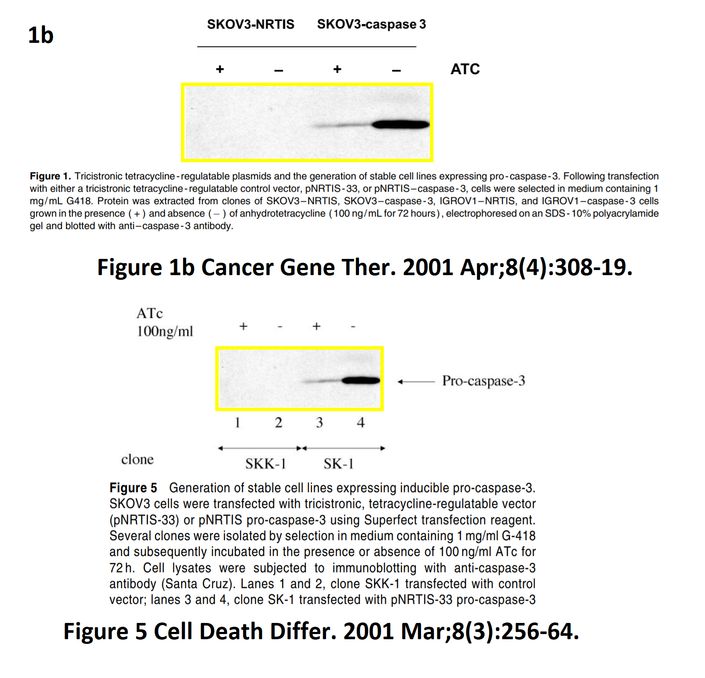
In November 2018, the first author and another Imperial College professor Ian McNeish posted on PubPeer the full investigative report by Limoine’s employer, Barts College, which was also approved by Imperial. McNeish, Limoine and the unnamed investigator agree that the raw data doesn’t exist (anymore, they say), that the two papers were submitted and reviewed simultaneously and that the gel bands are indeed duplicated. The investigator’s conclusions, as quoted by McNeish:
“None of these issues in my opinion change the conclusions made in the papers. I see no merit in retracting these important publications or publishing an erratum at this late stage, although agree that there have been errors made in producing the figures. […] The investigation stated that the conclusions made from the published studies were valid and important, even accounting for these reporting errors.“
This is the standard attitude of all English and in fact British universities. The wording is typical English passive-aggressiveness towards whistleblowers warning them never to waste the university’s time ever again or meet their due fate.
Below some more of Limoine papers, the rest is on PubPeer. The following is 7 years old, when it was posted the raw data was rather fresh, sometimes even piping hot. A key coauthor on all these papers is Yaohe Wang, another professor at Barts.
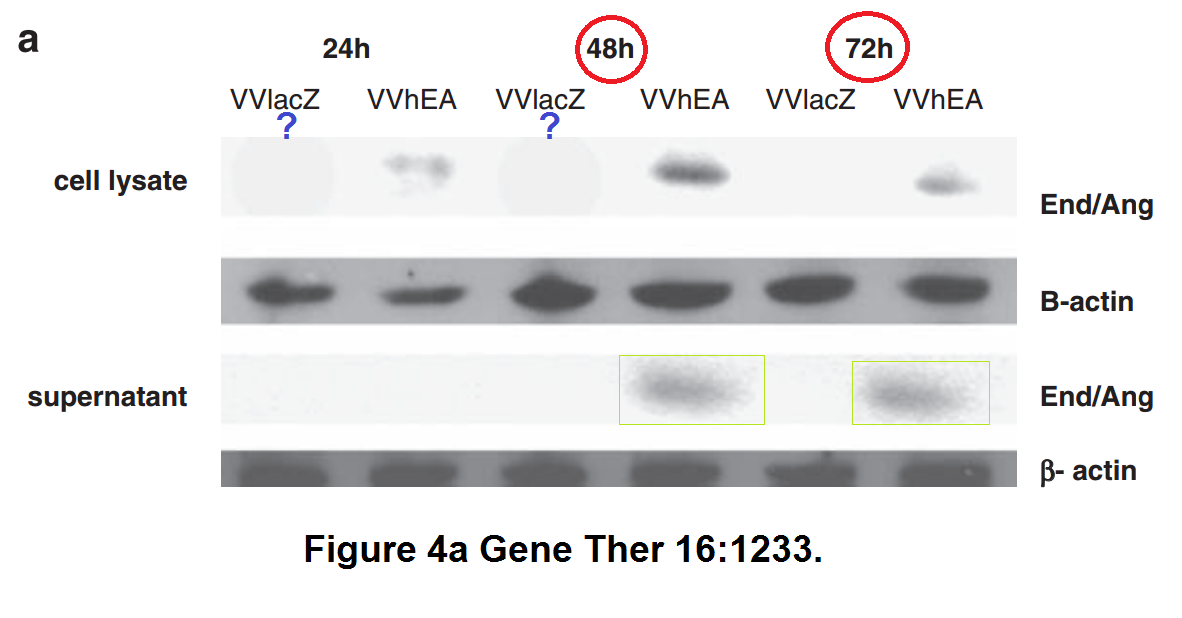
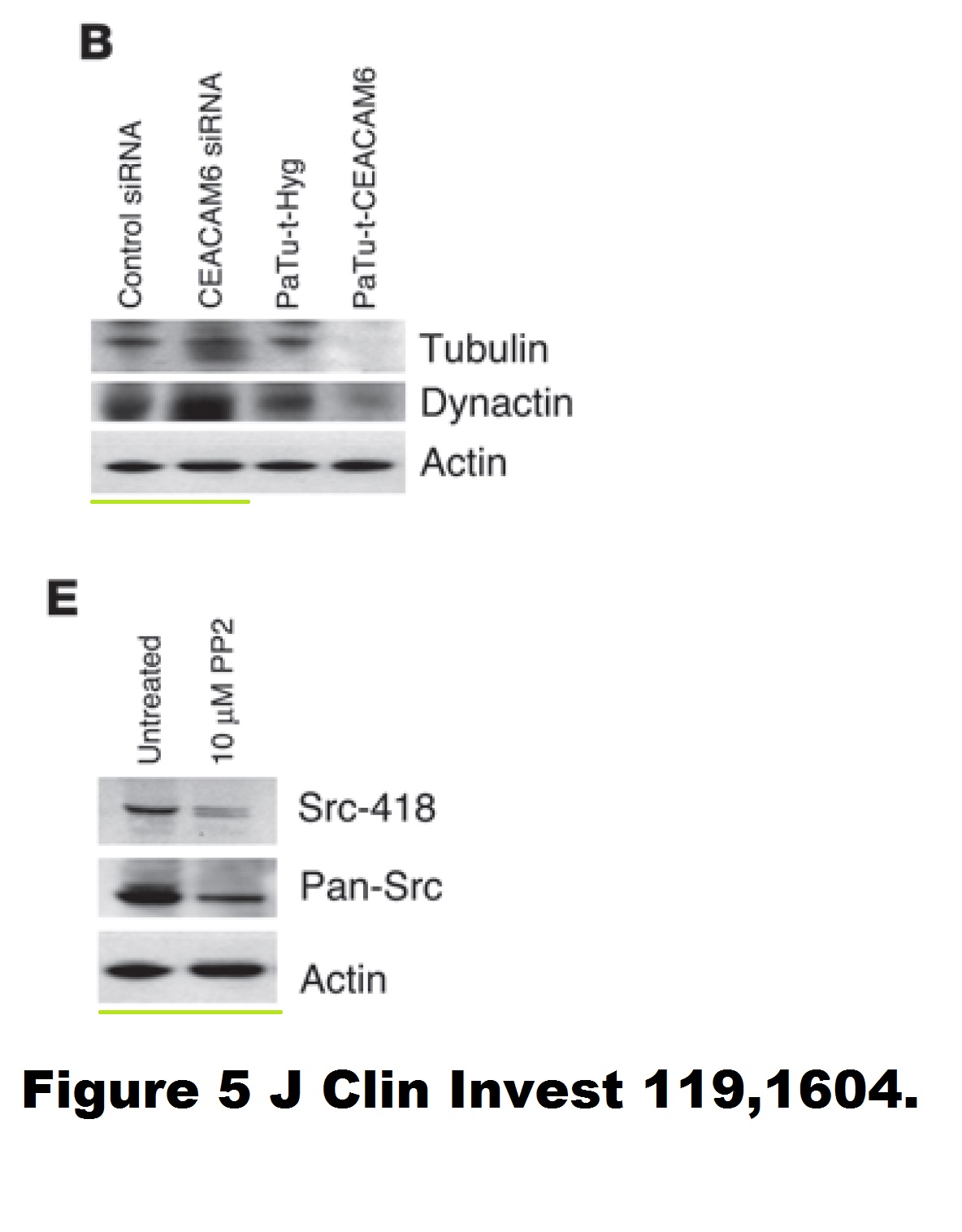
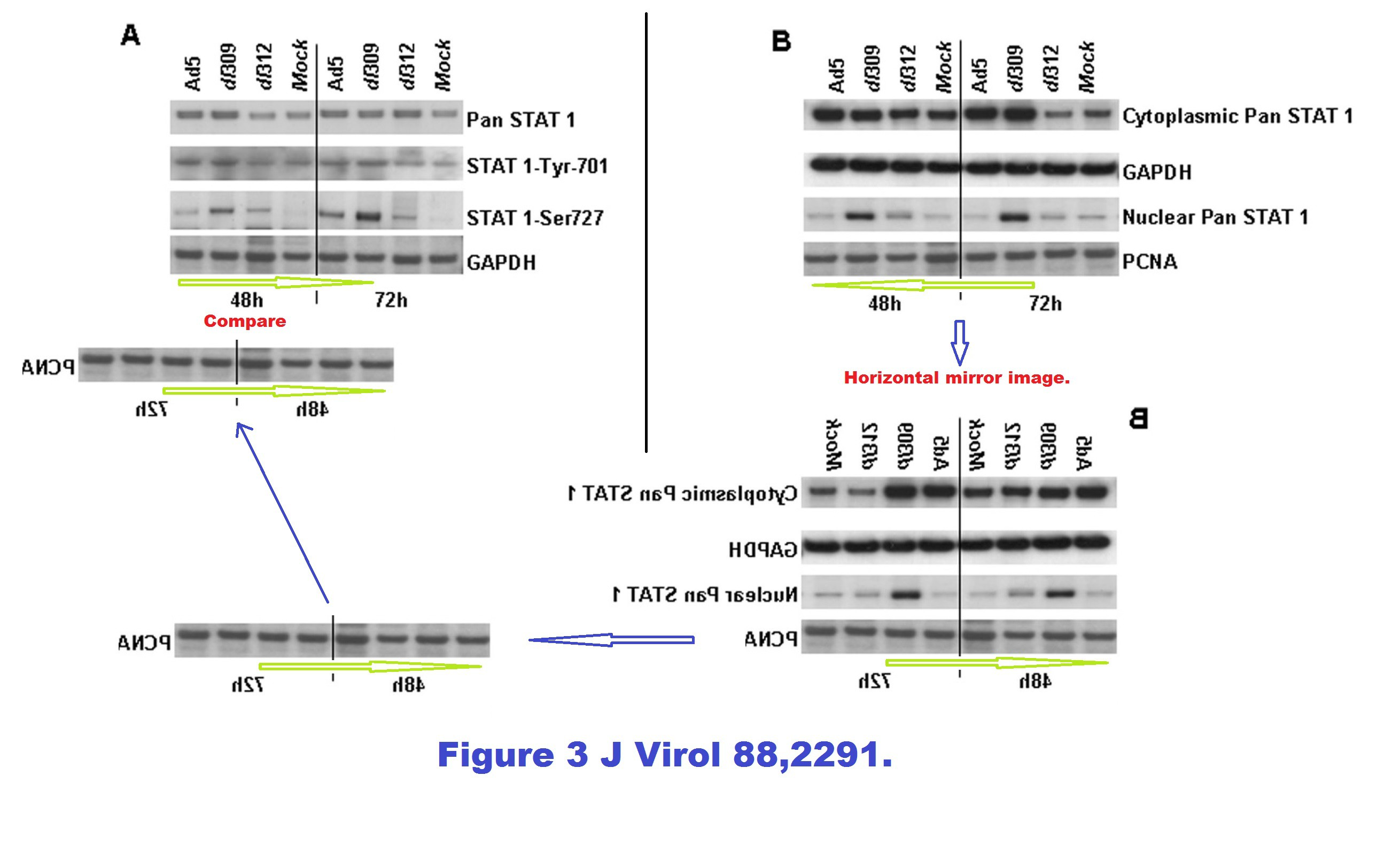
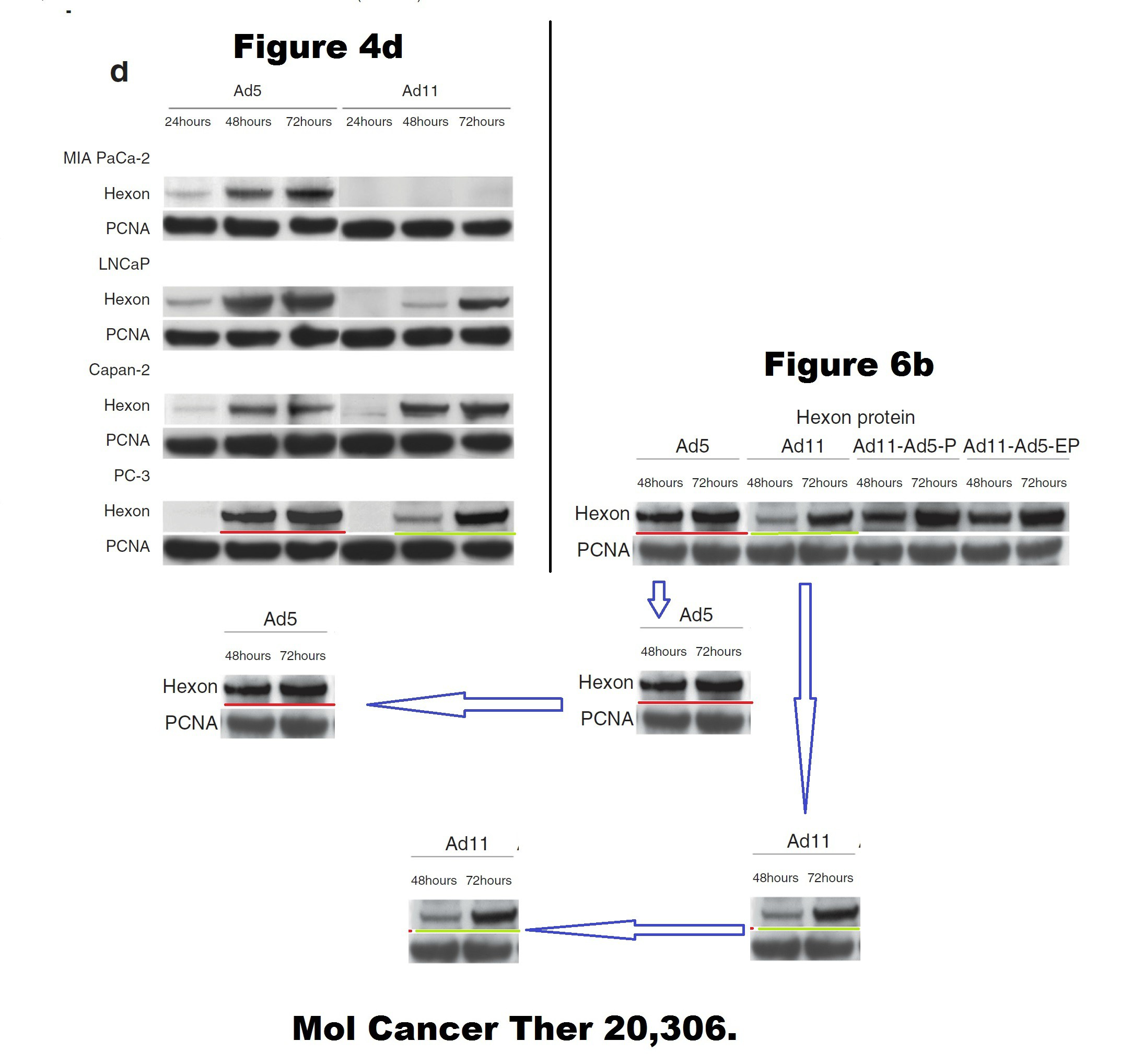
Barts College apparently decided instead to wait until this Photoshop travesty passes the 10 year statute of limitations. Expect another passive-aggressive investigative report in 2025, declaring Limoine and Wang innocent and all conclusions valid and not affected.
Peter St George-Hyslop, OC, FRS, FRSC, FRCPC
I think this name is so impressive, you can’t be more of English upper class, both in science and in society with a name like this. Of course Professor Peter St George-Hyslop is located in Cambridge, where he works on clinical neuroscience, previously he was in Canada where he was proclaimed “one of the most cited authors in the field of Alzheimer’s disease research”.
There are a number of papers coauthored by St George-Hyslop on PubPeer, here is one from his old lab at the University of Toronto:
Fusheng Chen, Gang Yu, Shigeki Arawaka, Masaki Nishimura, Toshitaka Kawarai, Haung Yu, Anurag Tandon, Agnes Supala, You Qiang Song, Ekaterina Rogaeva, Paul Milman, Christine Sato, Cong Yu, Christopher Janus, Julie Lee, Lixin Song, Lili Zhang, Paul E. Fraser, P. H. St George-Hyslop Nicastrin binds to membrane-tethered Notch Nature Cell Biology (2001) doi: 10.1038/35087069
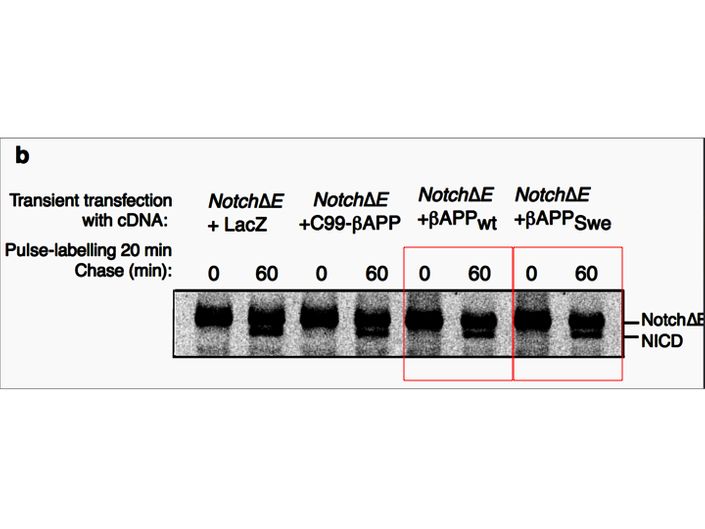
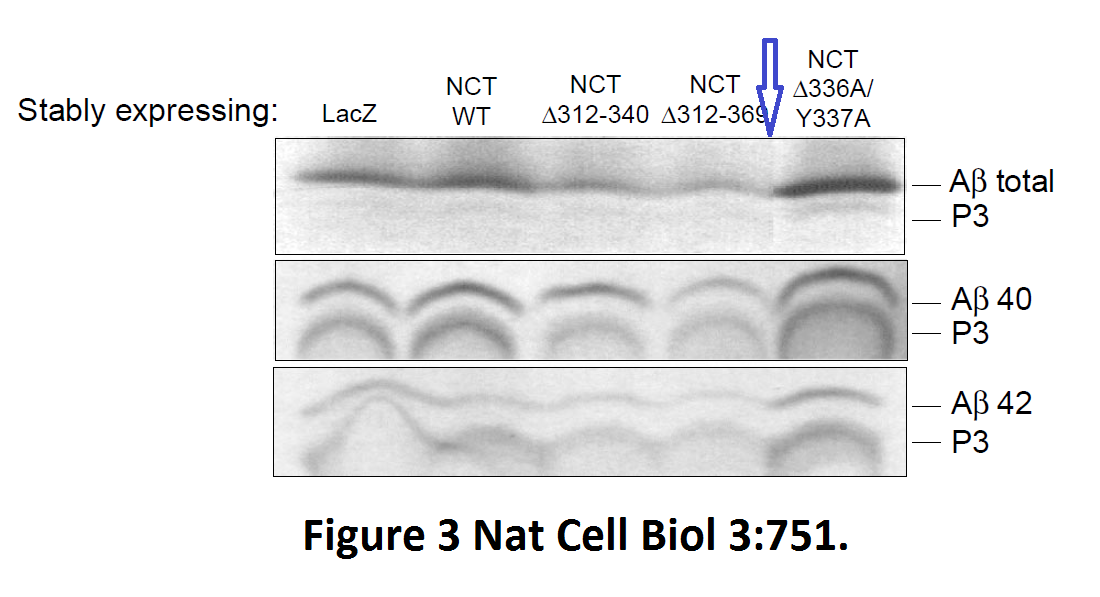
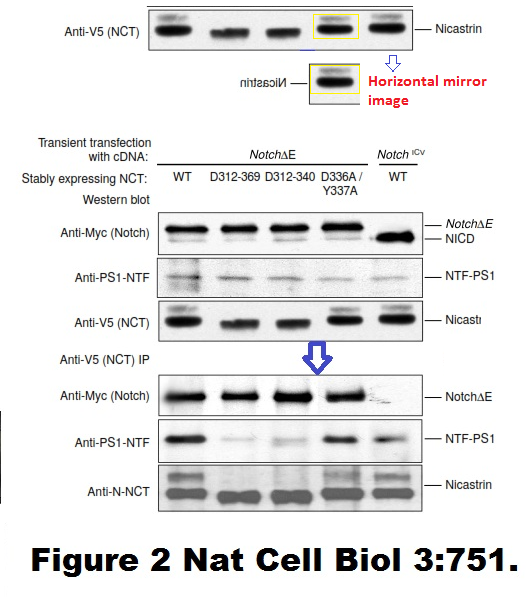
Cloned gel bands, spotted by Clare Francis. No action at all form that elite Nature-themed journal. Another St George-Hyslop fabrication, also done with Toronto colleagues:
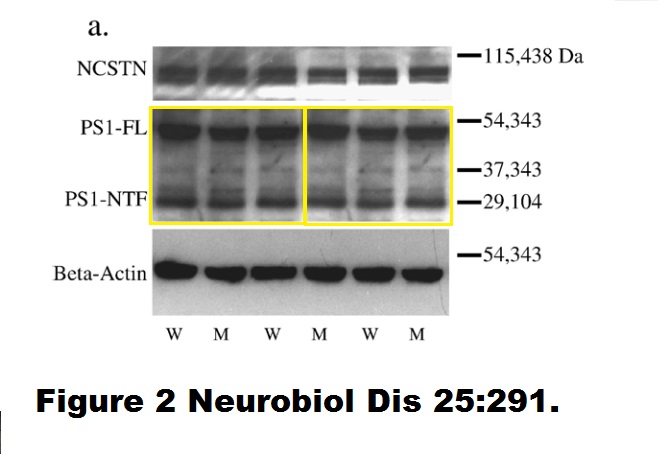
Sonya Brijbassi, Zareen Amtul, Susan Newbigging, David Westaway, Peter St George-Hyslop, Richard F. Rozmahel Excess of nicastrin in brain results in heterozygosity having no effect on endogenous APP processing and amyloid peptide levels in vivo Neurobiology of Disease (2007) doi: 10.1016/j.nbd.2006.09.013
But the worst ones were done in collaboration with Frederic Checler, professor of neuroscience at CNRS in France. Like this, where the authors shamelessly double-published to increase their publication record:
Julie Dunys, Toshitaka Kawarai, Emilie Giaime, Sherwin Wilk, M. Herrant, P. Auberger, Peter St George-Hyslop, Cristine Alves Da Costa, Frédéric Checler Study on the putative contribution of caspases and the proteasome to the degradation of Aph-1a and Pen-2 Neuro-degenerative diseases (2007) doi: 10.1159/000101840
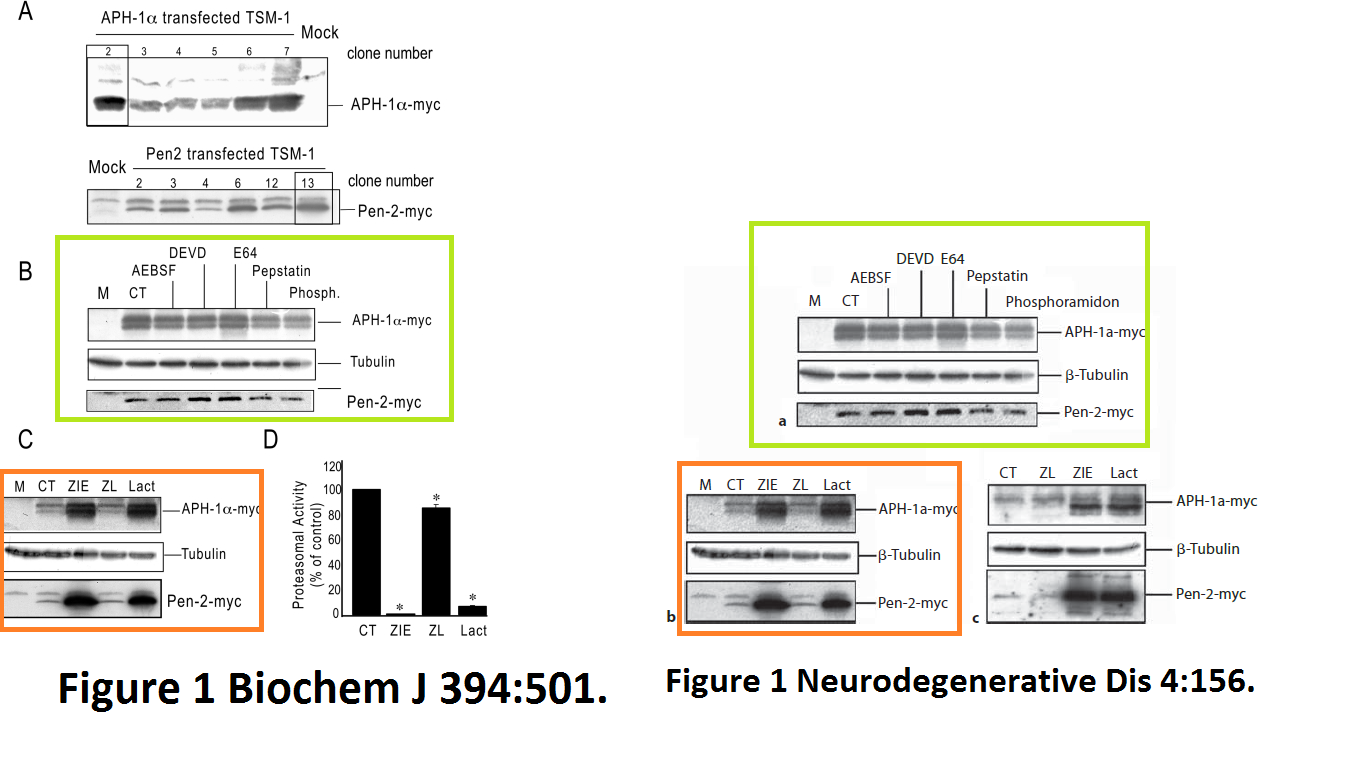
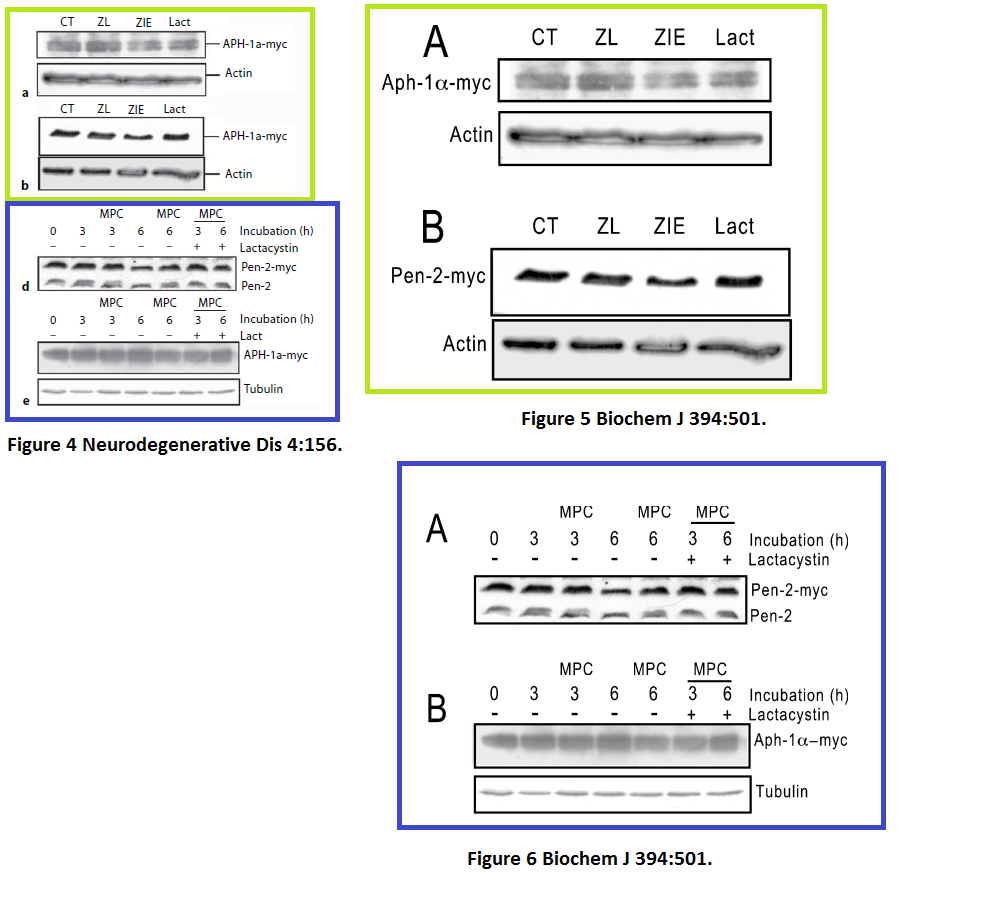
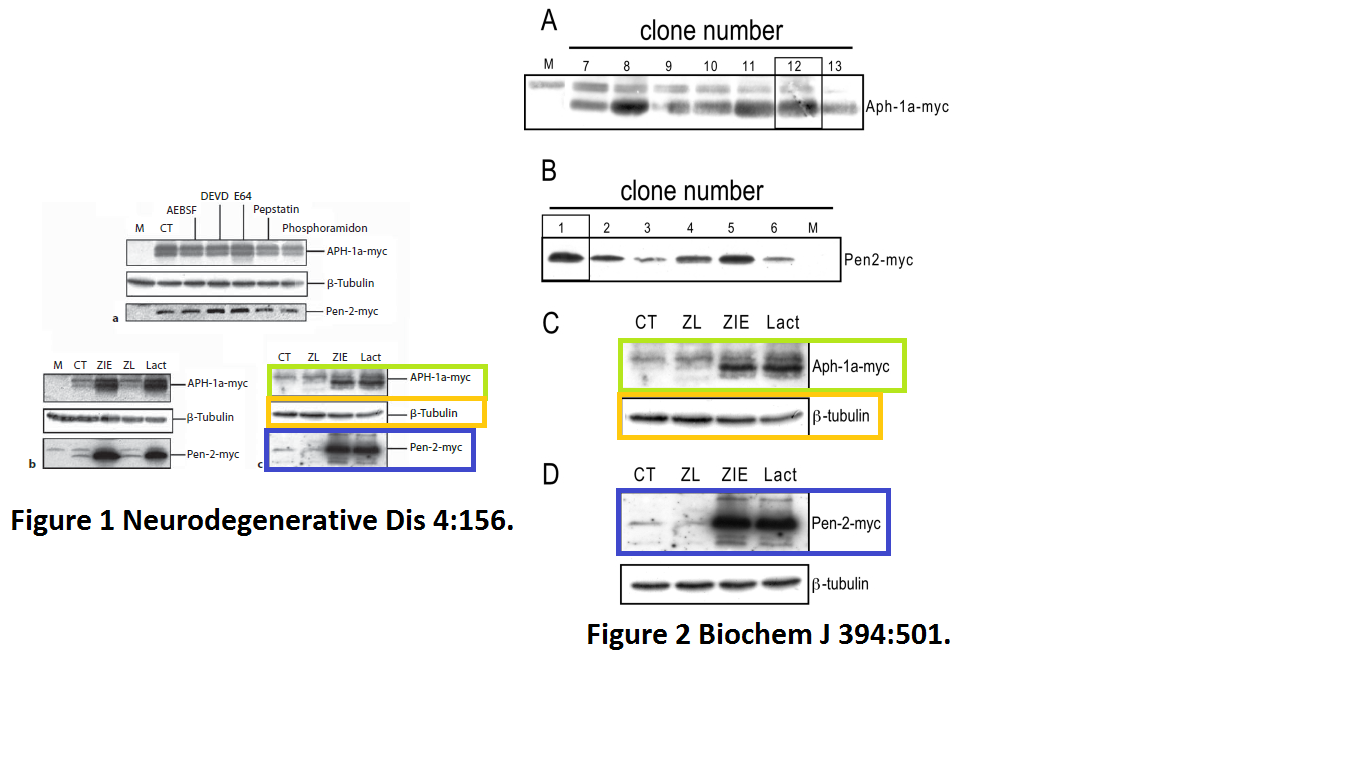
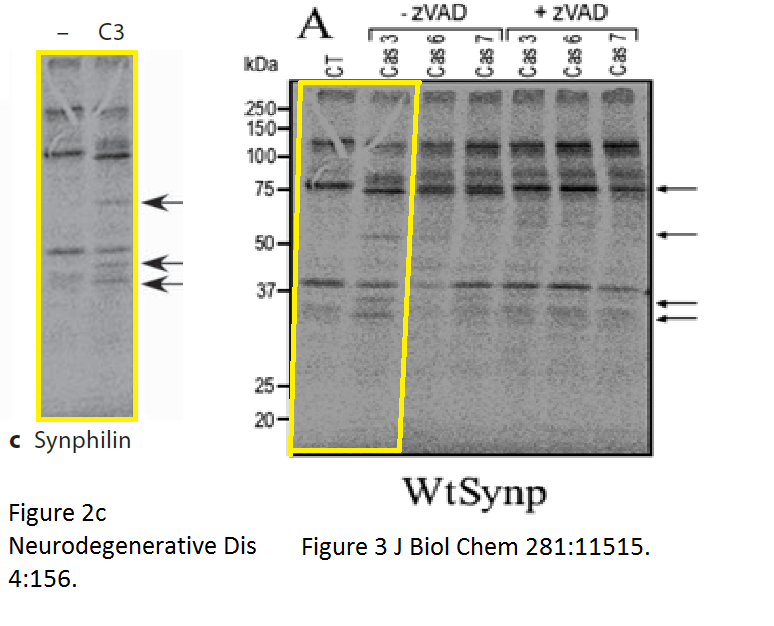
There was more data recycling, basically that paper in Neurodeg Dis is a copy of the previously published paper Dunys et al Biochemical J 2006, with all other authors the same. Neither journal, one by Portland Press, one by Karger, cares, never mind for research integrity, not even for their own infringed copyright.
Here more by St George-Hylop and his French ally, some gel band copy-pasting:
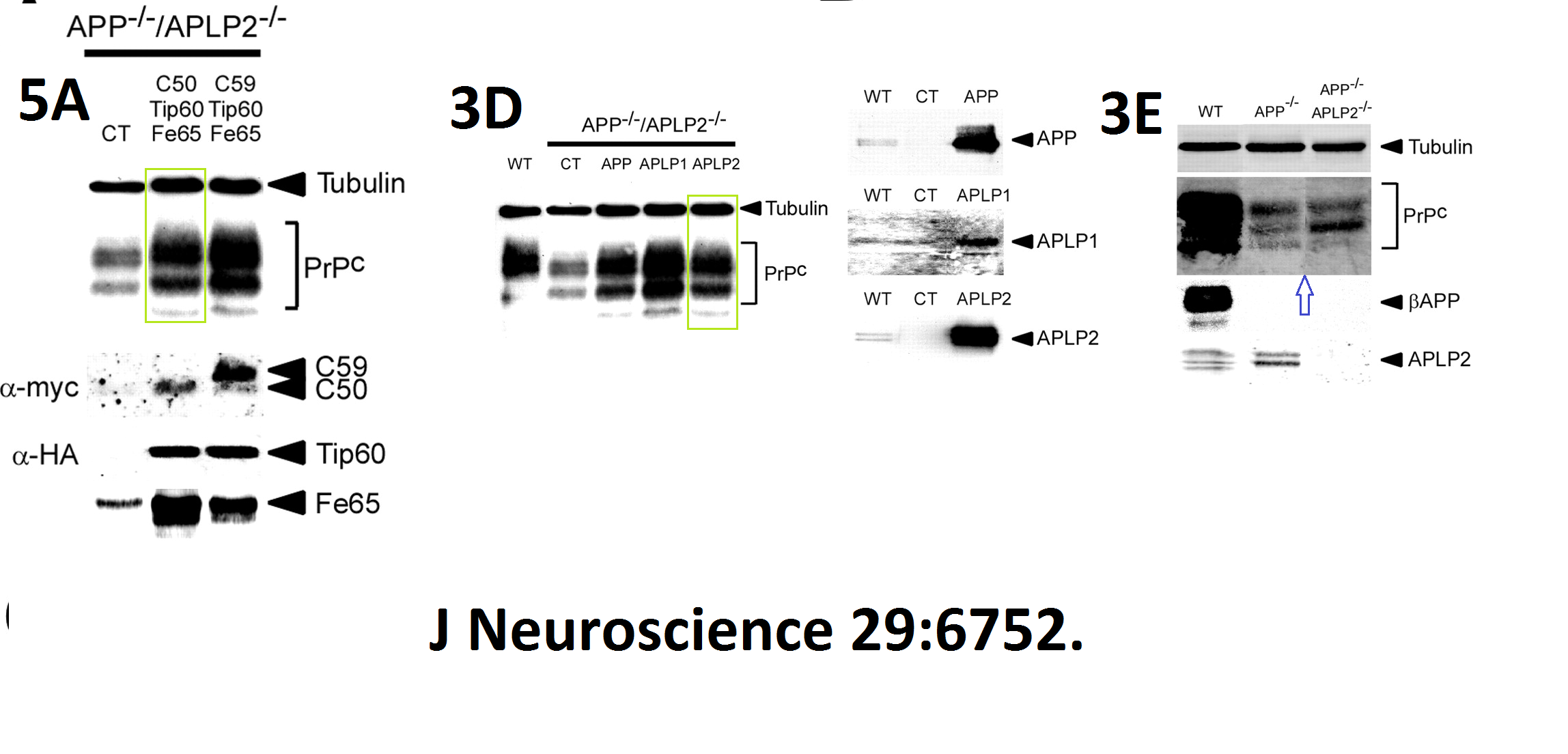
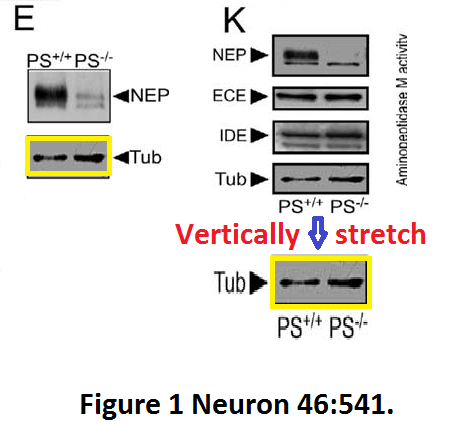
Here another interesting collaboration of our esteemed English upper class scientist, this time with Masaya Tohyama in Japan:
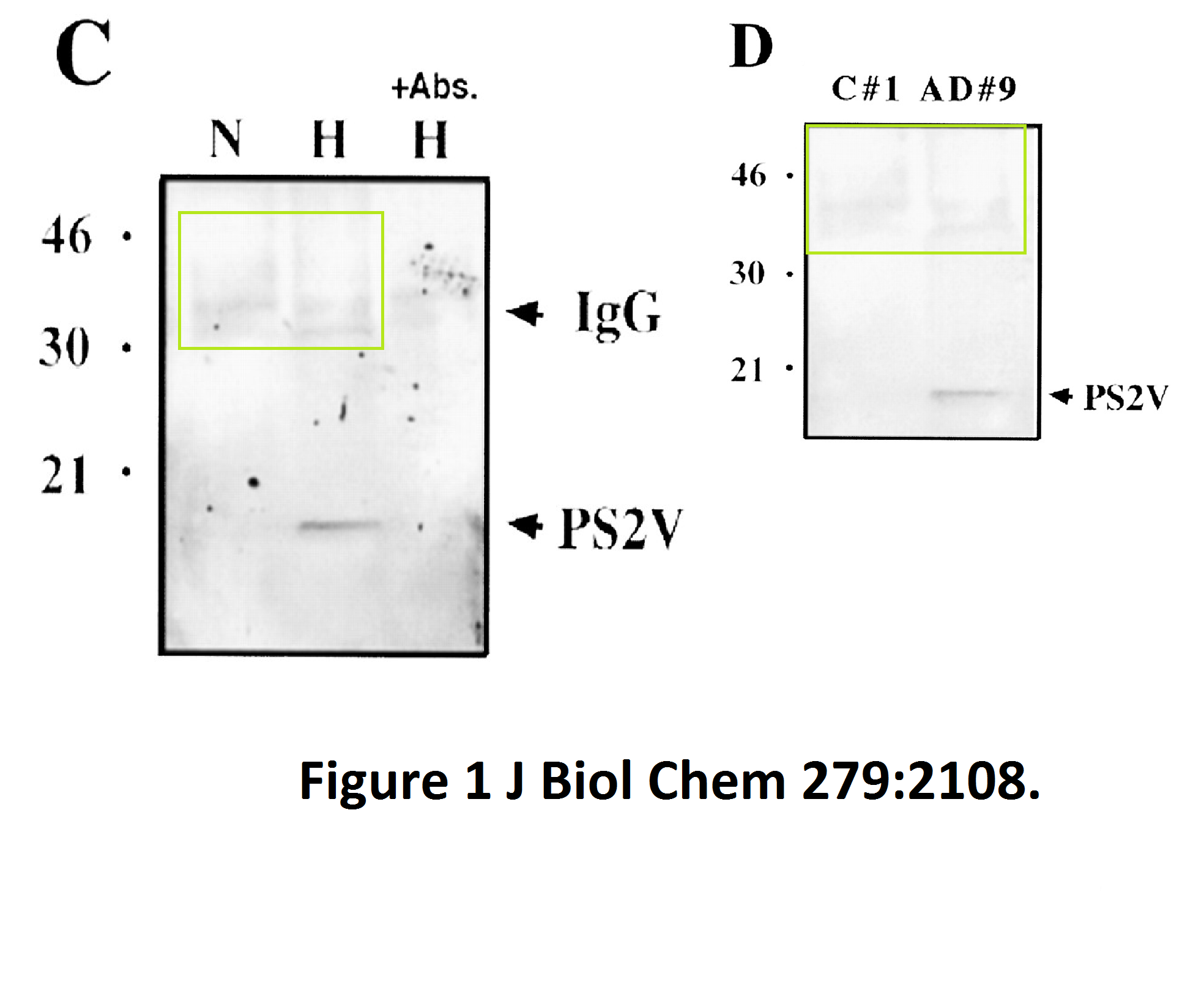
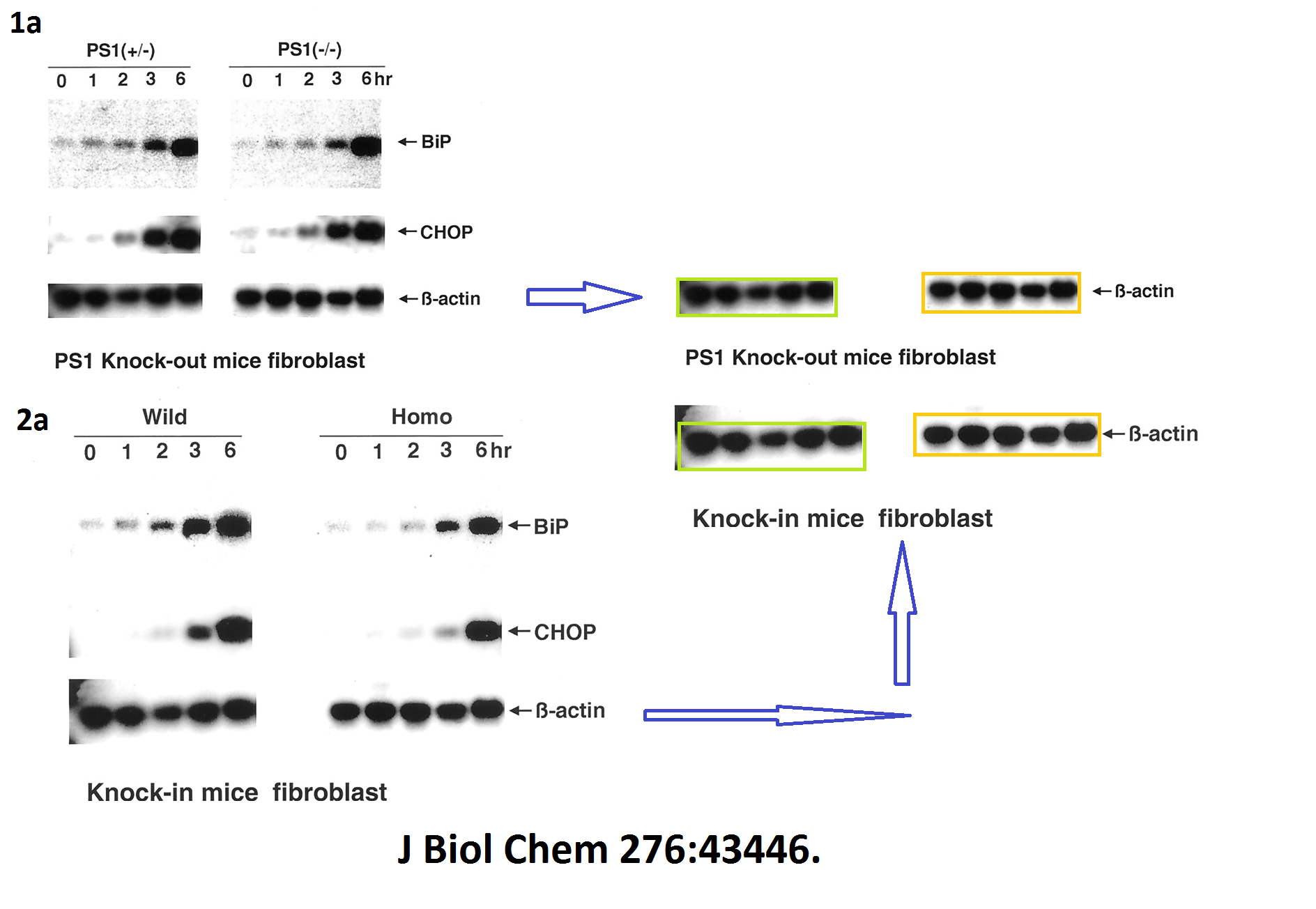
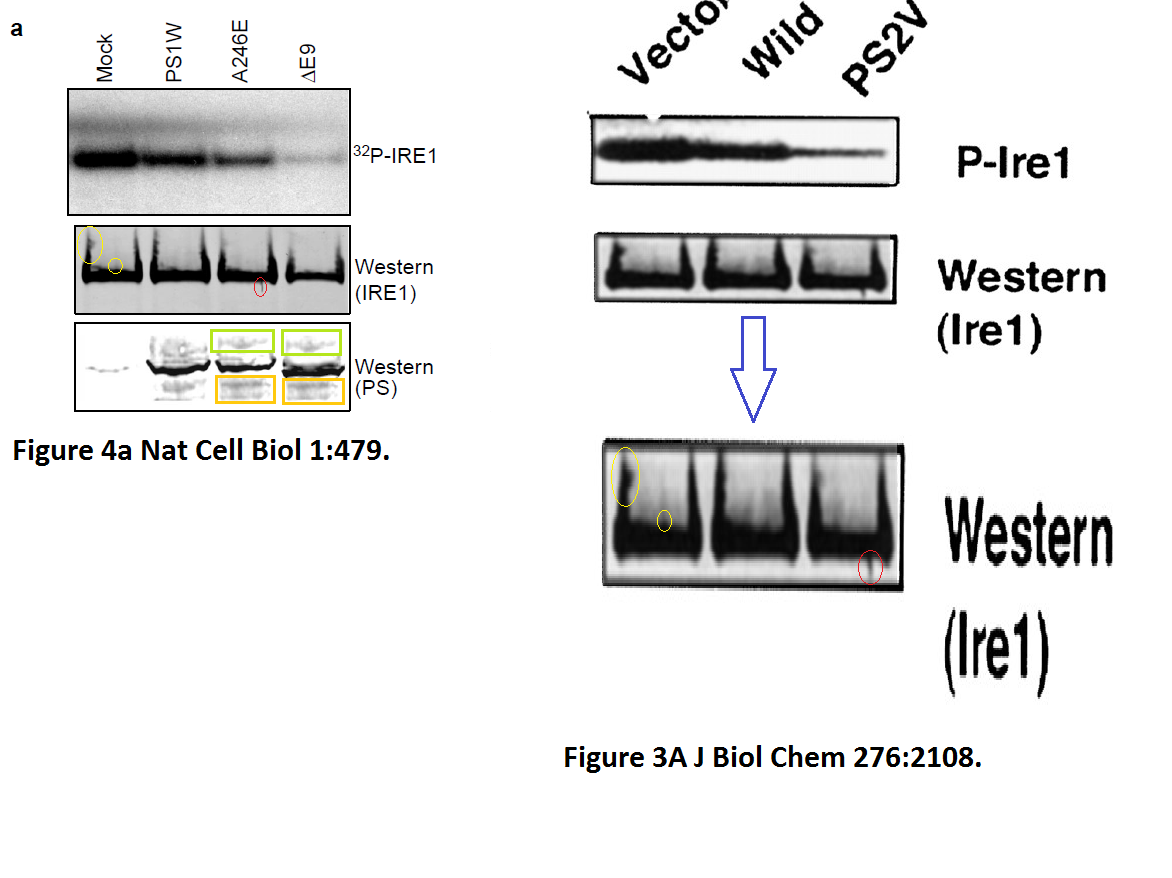
The evidence is years old, but nothing has happened so far. Yet one St George-Hyslop coauthored publication was retracted in 2020. Its first author Sabine Wislet is professor in Belgium and has a number of other papers questioned on PubPeer, including another retraction.
Sabine Wislet-Gendebien, Cheryl D’Souza, Toshitaka Kawarai, Peter St George-Hyslop, David Westaway, Paul Fraser, Anurag Tandon Cytosolic proteins regulate alpha-synuclein dissociation from presynaptic membranes The Journal of biological chemistry (2006) doi: 10.1074/jbc.m605965200
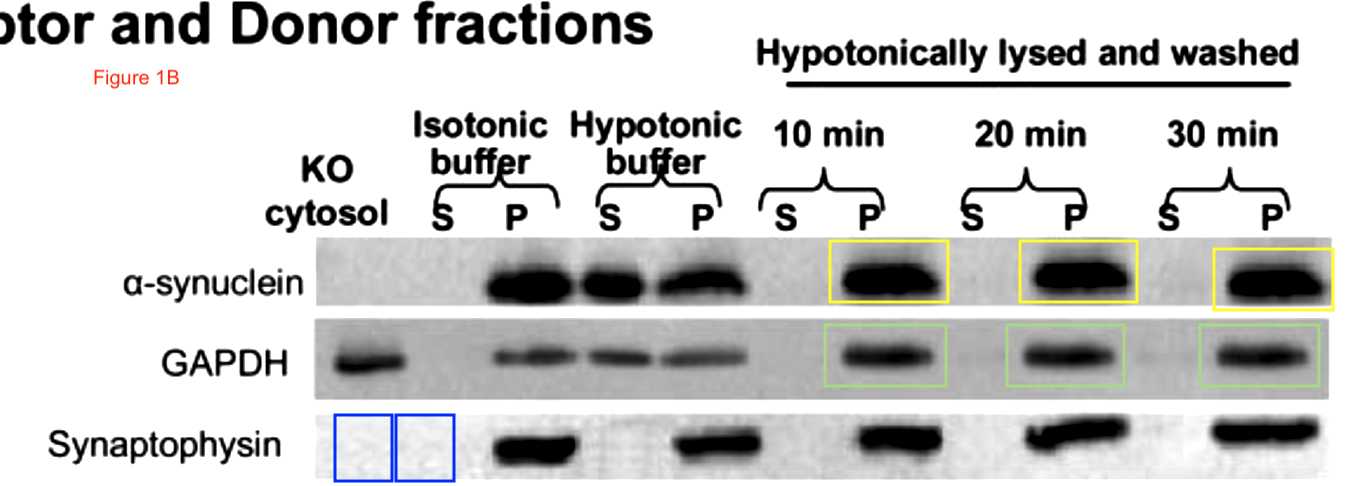

Now the fun starts. Clare Francis of course notified the University of Cambridge and the Wellcome Trust (which funds St Seorge-Hyslop’s research). This was their decision, as penned to Clare Francis by the Policies & Governance Officer of Wellcome Trust, Lucy Douch, in February 2017:
“Further to your email of 17 August 2016, we raised your concerns about Professor Peter St George-Hyslop with the University of Cambridge, the employing institution.
The University conducted an investigation under its Misconduct in Research policy. The investigation concluded that the allegations made are entirely unfounded.”
This is not even passive aggressive, it sounds almost like a legal threat from Wellcome Trust. In fact, this is a proud English Fuck You to every single whistleblower who dares to impugn the greatness of English science genius.
Although, to be fair, I suspect the Cambridge University probably has same statute of limitations on research fraud as Oxford, of 3 years. Because there was nothing for them to investigate in those older paper, they declared the allegations as “entirely unfounded”.
If you enjoyed St George-Hyslop’s aristocratic antics, you should also have a look at the PubPeer record of another Cambridge professor, Dame Carol Mary Black, DBE, FRCP, BSD, Principal of the Newnham College. Here a sample, with the Dame Commander of the Order of the British Empire as last author, Denton et al JBC 2005:

Xin Lu, FRS
Britain is open to foreigners, as we know. Not the lowly kind who don’t know how to get rich quick. If you know how to play the game, you can become part of the English science elite. Xin Lu studied in her home land China, and in UK she eventually arrived to the Ludwig Cancer Centre, first at its London branch and later to take over the directorship of the central seat in Oxford.
Yes, Oxford is the university with 3 year statute of limitation for research misconduct. Nothing to see here at all:
Daniele Bergamaschi, Yardena Samuels, Alexandra Sullivan, Marketa Zvelebil, Hilde Breyssens, Andrea Bisso, Giannino Del Sal, Nelofer Syed, Paul Smith, Milena Gasco, Tim Crook, Xin Lu iASPP preferentially binds p53 proline-rich region and modulates apoptotic function of codon 72–polymorphic p53 Nature Genetics (2006) doi: 10.1038/ng1879
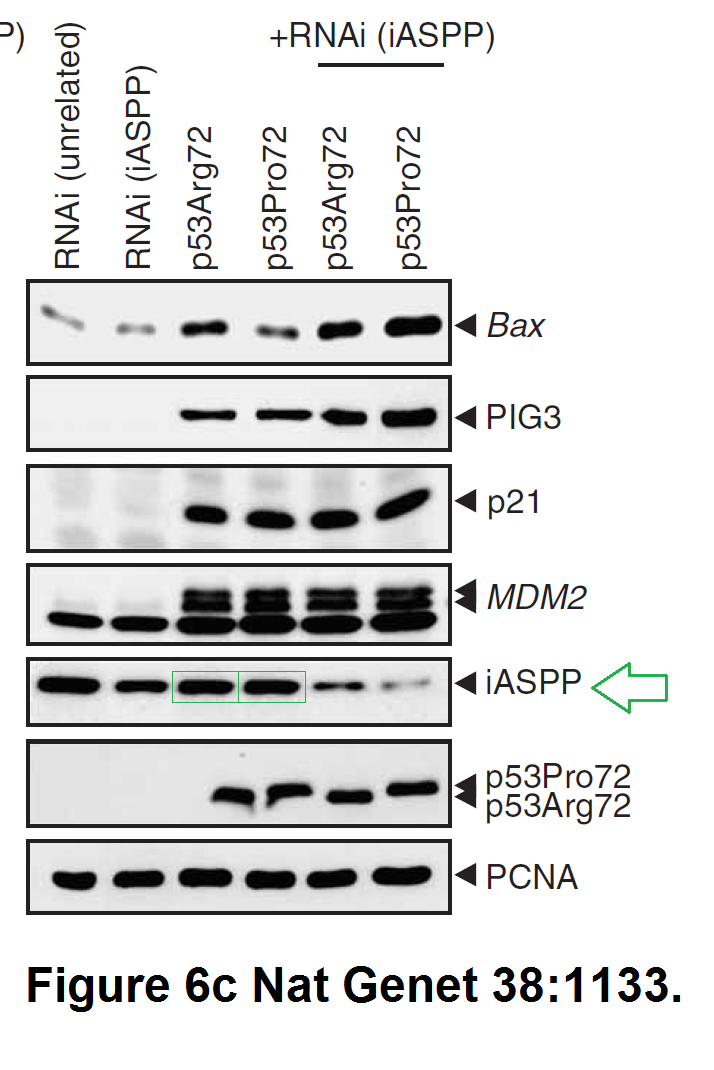
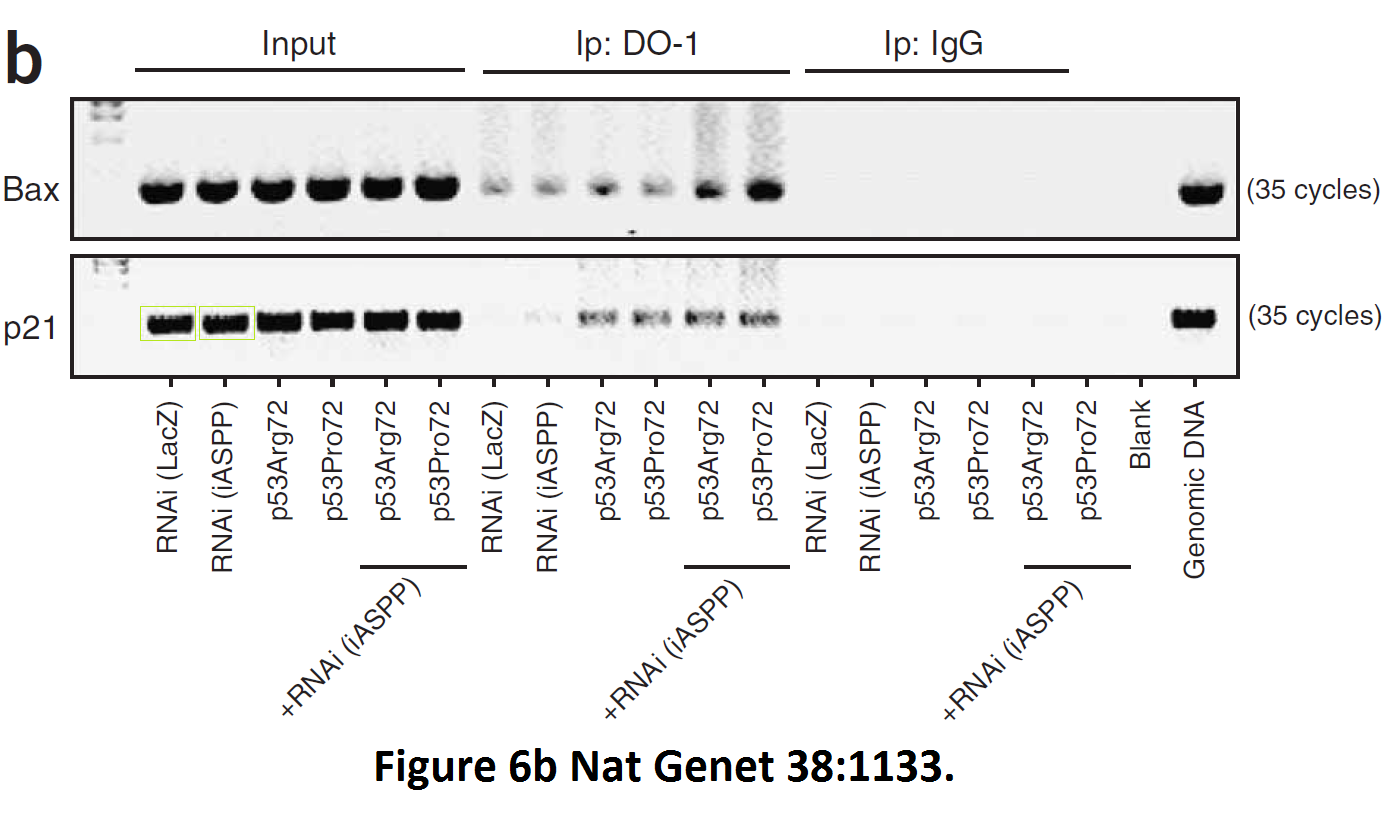
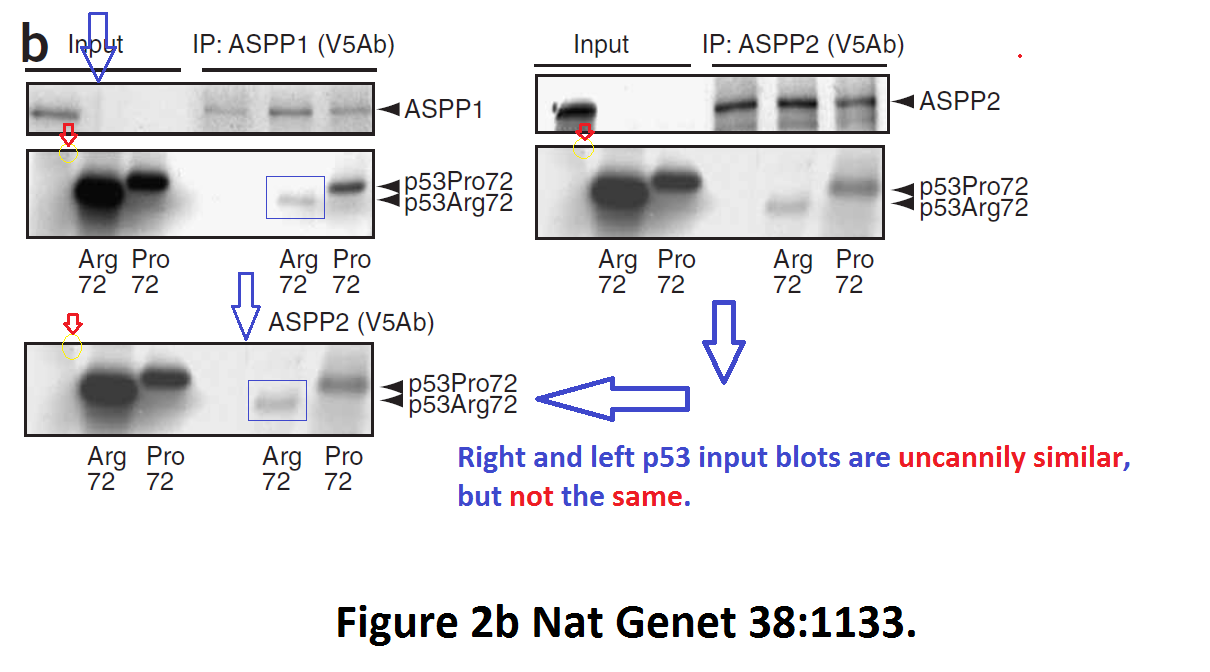
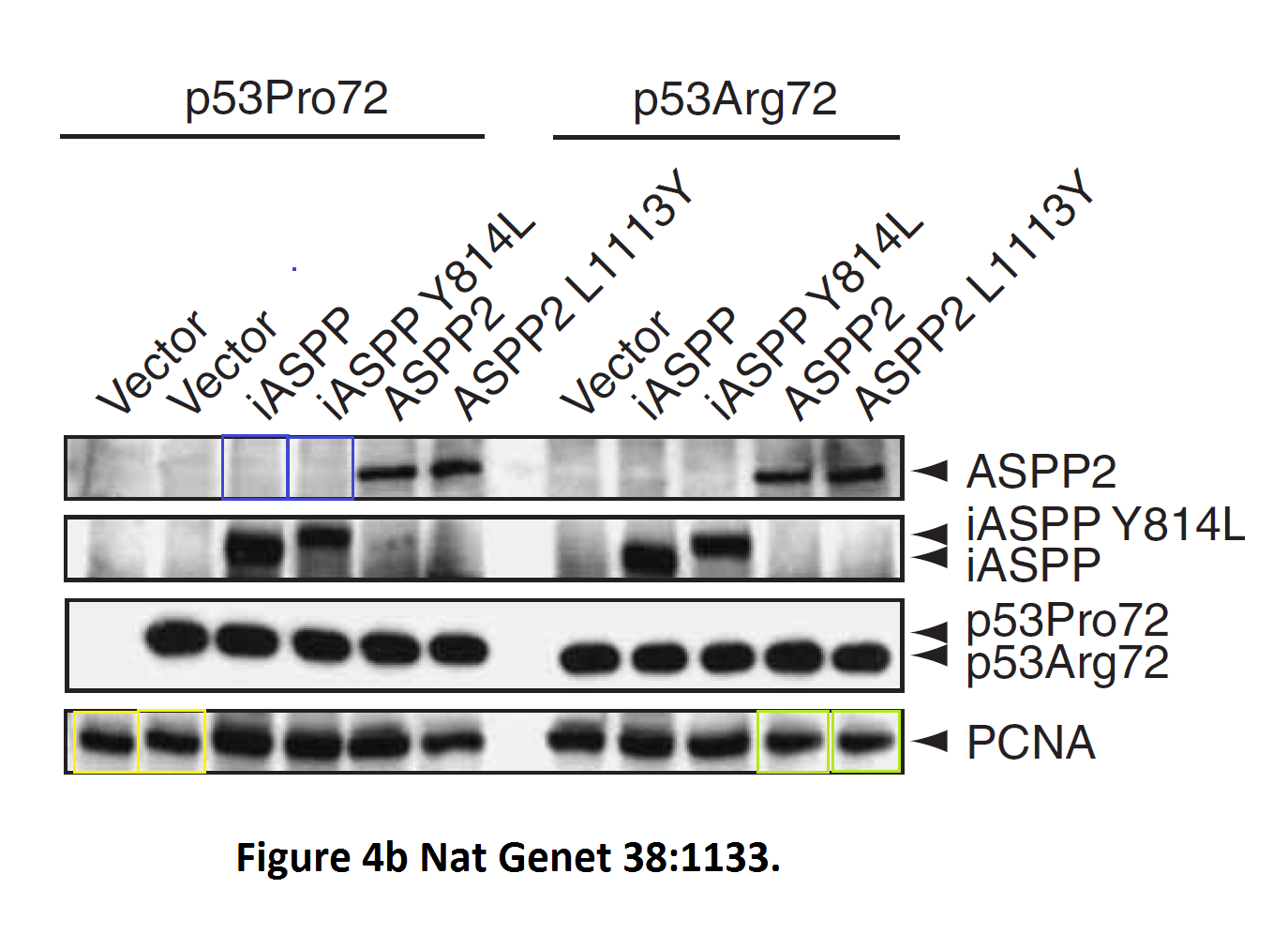
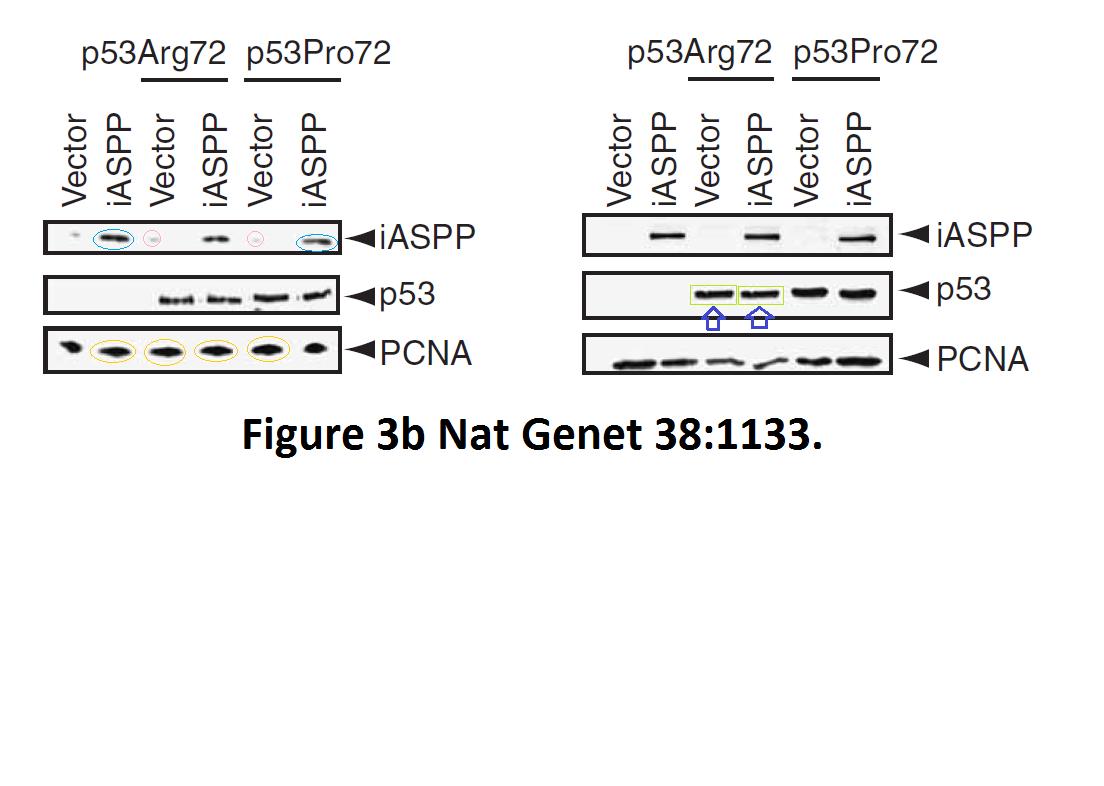
So many cloned gel bands, and yes, Clare Francis informed the University of Oxford of this and other masterpieces. The first author on that paper, Daniele Bergamaschi is now lecturer at the Queen Mary University of London, his lab is at Barts. You see again which kind of talents Barts boss Lemoine expects from his principal investigators. Bergamaschi also authored this work of art with Lu:
Daniele Bergamaschi, Yardena Samuels, Boquan Jin, Sai Duraisingham, Tim Crook, Xin Lu ASPP1 and ASPP2: common activators of p53 family members Molecular and Cellular Biology (2004) doi: 10.1128/mcb.24.3.1341-1350.2004
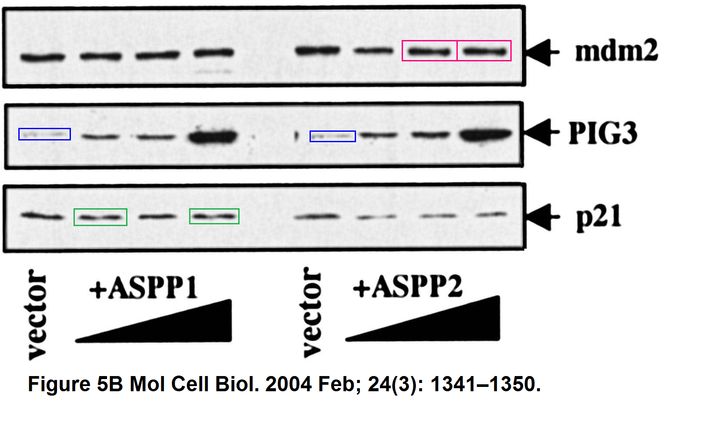
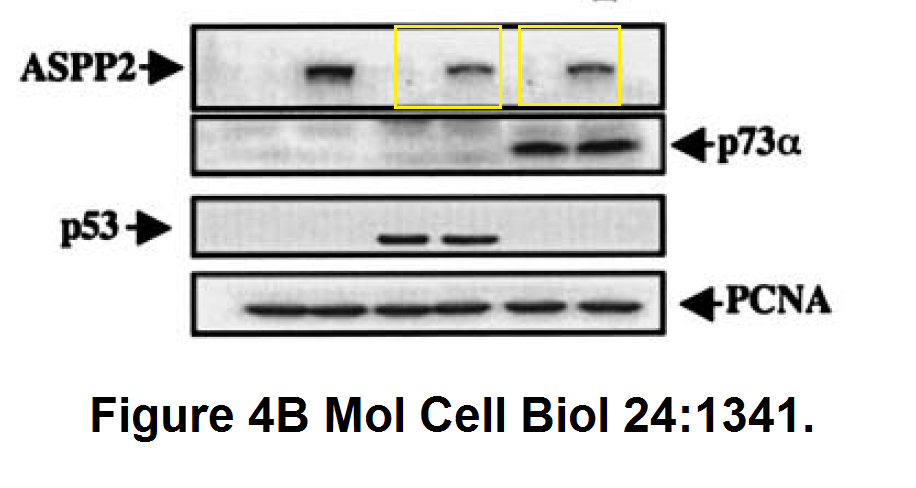
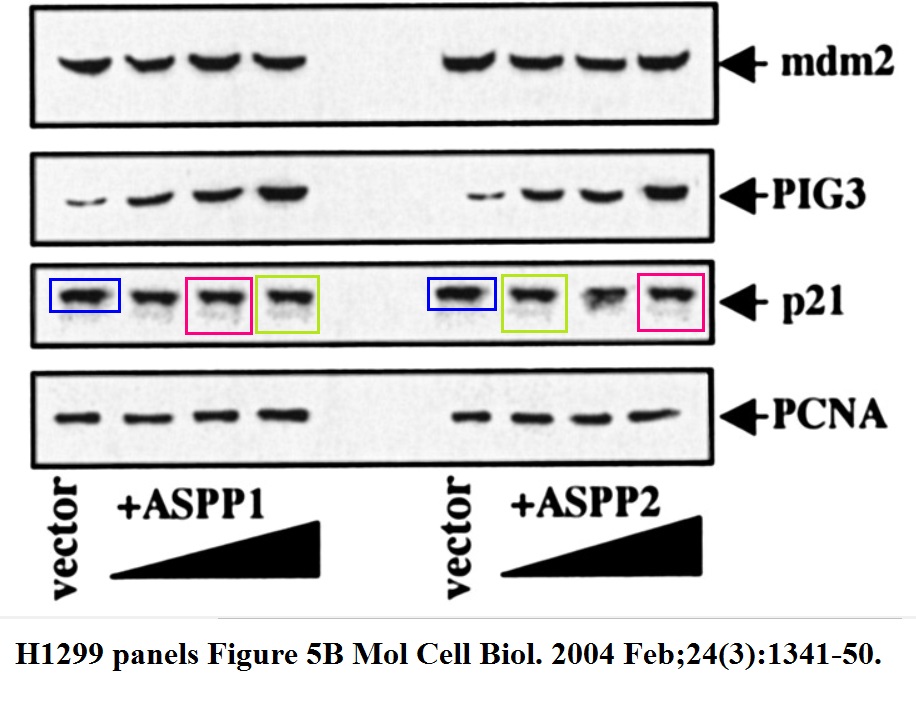

And this one by Bergamaschi and Lu, in Oncogene (remember the Editor-in-Chief Justin Stebbing?):
Daniele Bergamaschi, Yardena Samuels, Shan Zhong, Xin Lu Mdm2 and mdmX prevent ASPP1 and ASPP2 from stimulating p53 without targeting p53 for degradation Oncogene (2005) doi: 10.1038/sj.onc.1208535
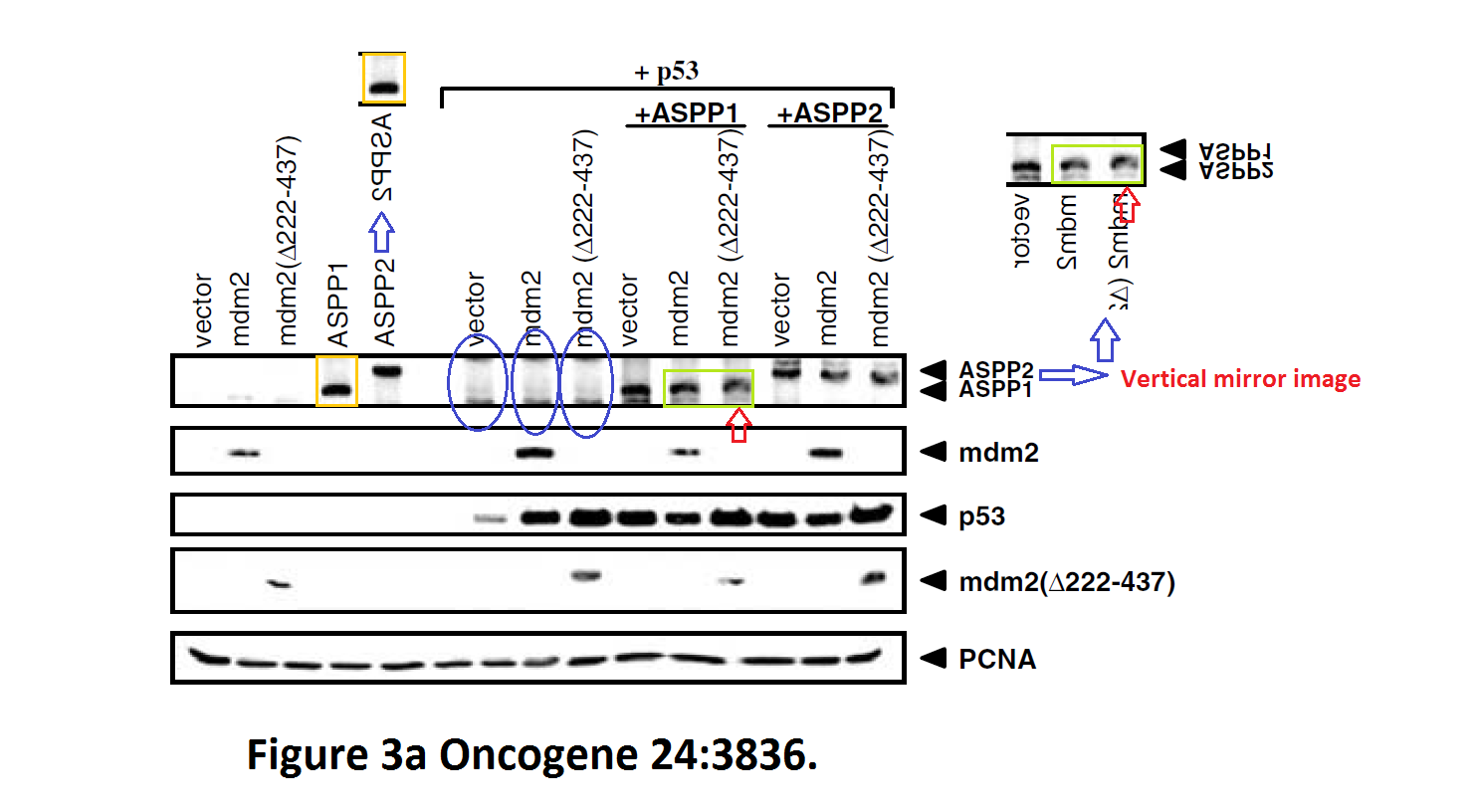
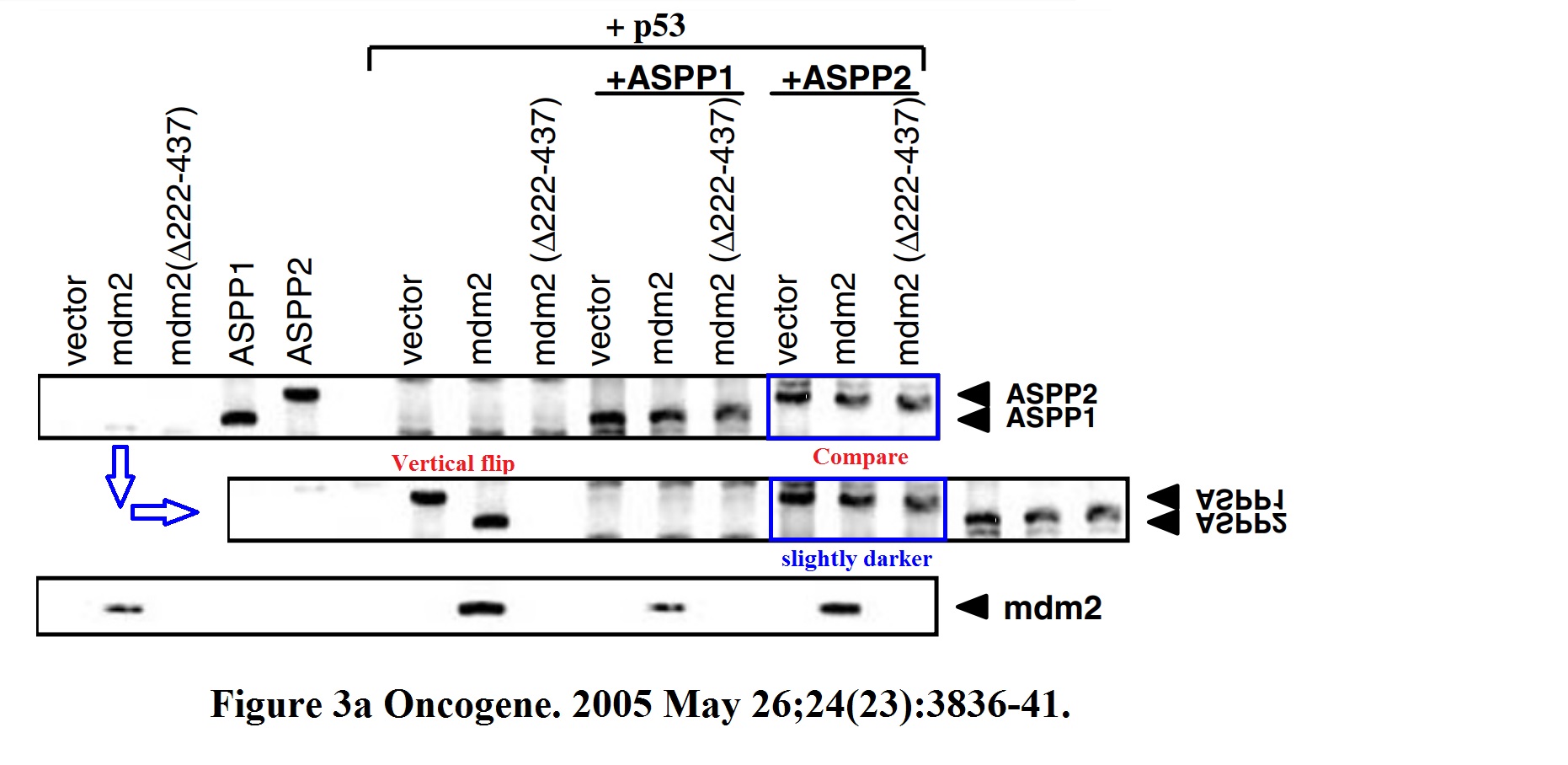
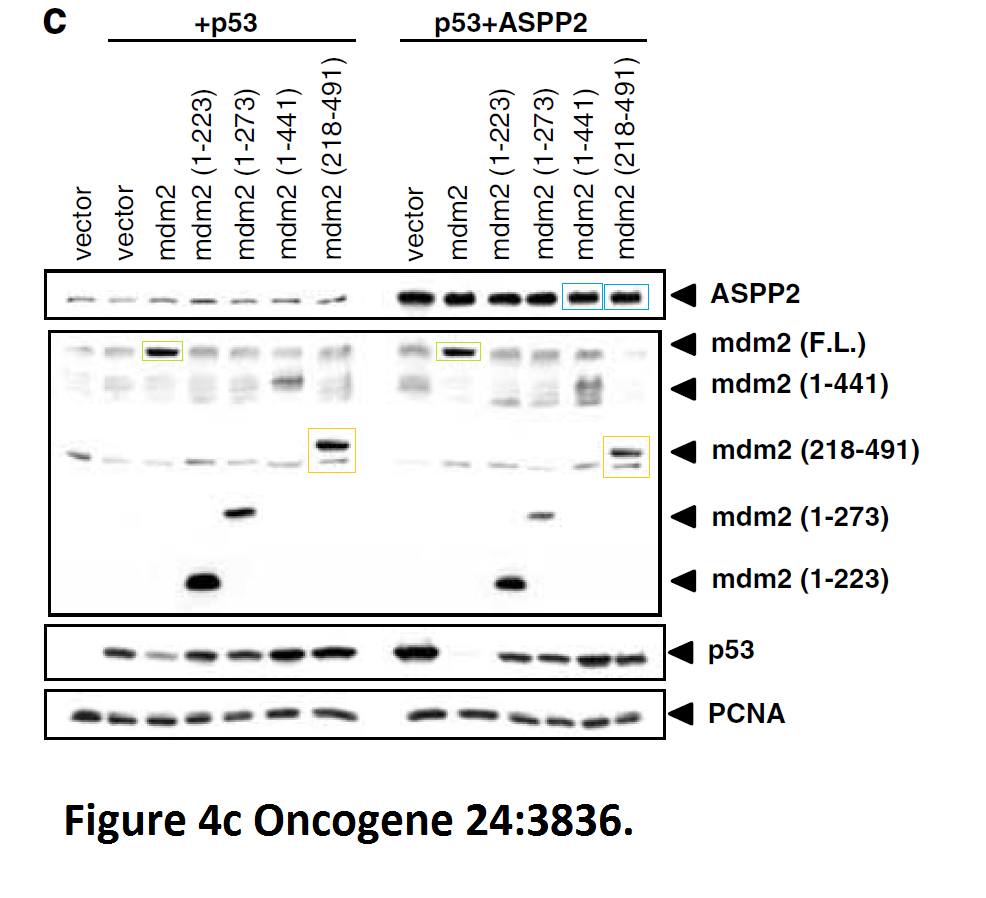
I hope you are learning from Bergamaschi and Lu how to make career in English science. It’s not that difficult, all you need is the will to succeed. Another common author on all these papers is Yardena Samuels. She went back to Israel where she is now professor at the Weizmann Institute. Here more by Bergamaschi (and Samuels):
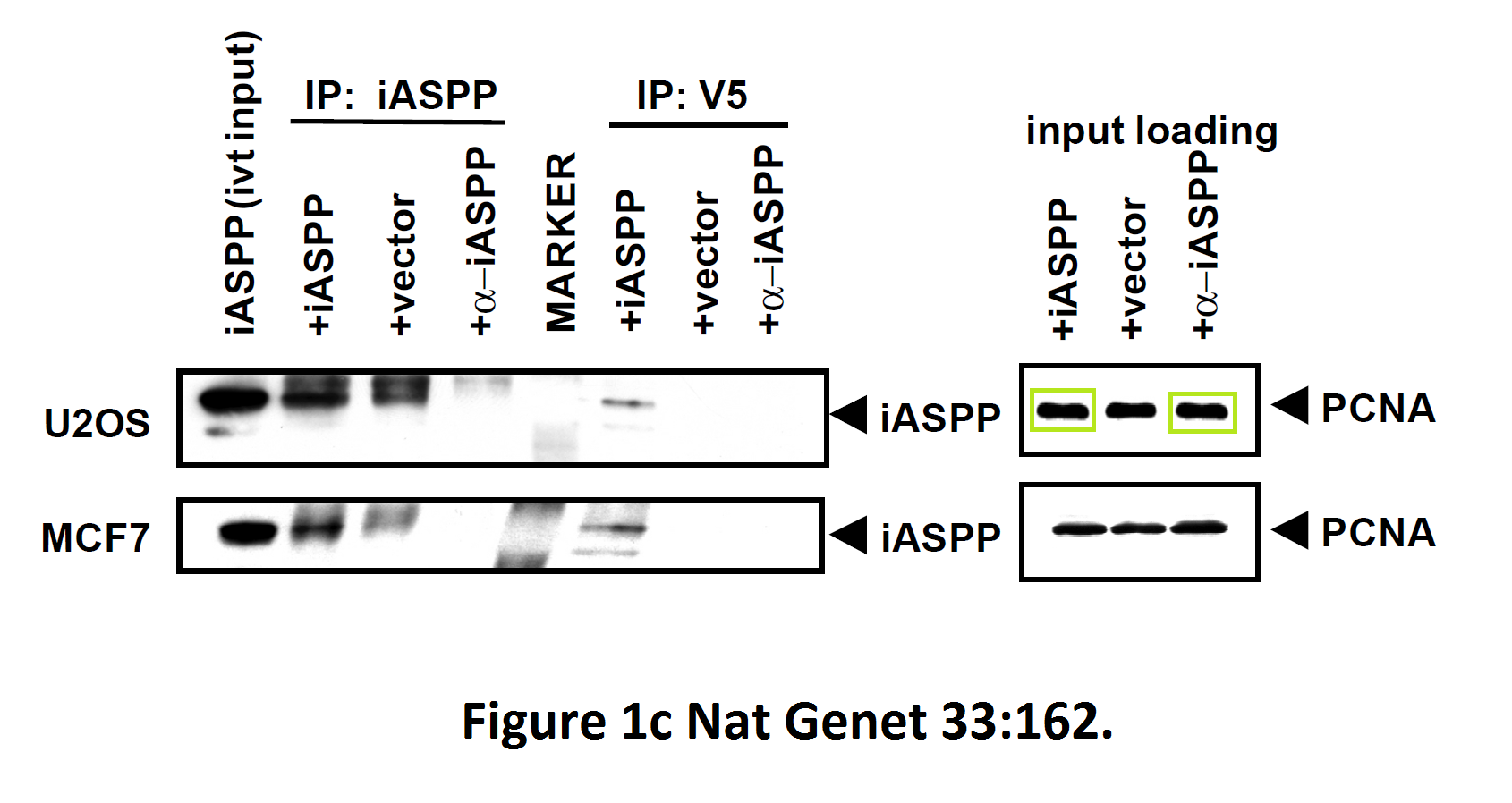
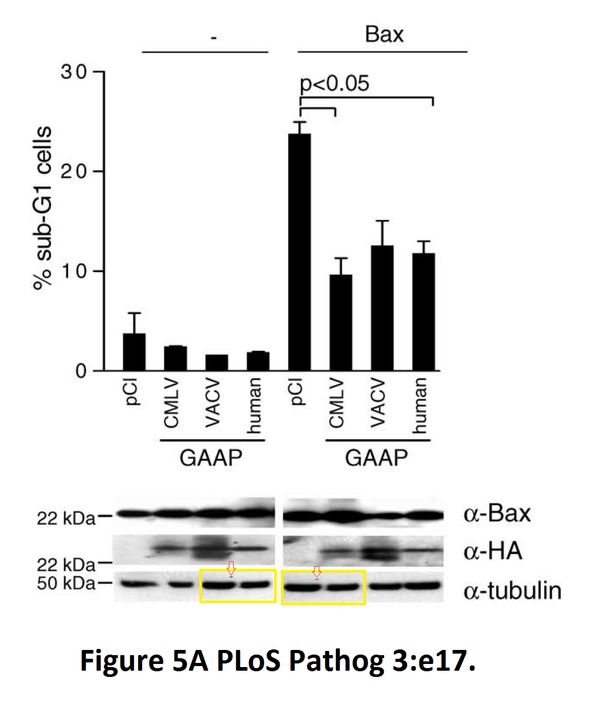
The last author on one of those papers is Geoffrey Smith, head of Pathology Department at University of Cambridge and member of all possible learned societies including the German Leopoldina. People of this calibre can’t be associated with bad science, so don’t expect even a correction.
But the next two papers from Lu lab doesn’t have Bergamaschi among its authors. Here one:

Damian B. S. Yap, Jung-Kuang Hsieh, Shan Zhong, Vicky Heath, Barry Gusterson, Tim Crook, Xin Lu Ser392 phosphorylation regulates the oncogenic function of mutant p53 Cancer Research (2004) doi: 10.1158/0008-5472.can-1305-2
These are two very fraudulent figures, bands were erased in one version by a rascal. But this paper, like others, is too old for anyone to give a toss about. Here something more recent:
Min Lu, Hilde Breyssens, Victoria Salter, Shan Zhong, Ying Hu, Caroline Baer, Indrika Ratnayaka, Alex Sullivan, Nicholas R. Brown, Jane Endicott, Stefan Knapp, Benedikt M. Kessler, Mark R. Middleton, Christian Siebold, E. Yvonne Jones, Elena V. Sviderskaya, Jonathan Cebon, Thomas John, Otavia L. Caballero, Colin R. Goding, Xin Lu Restoring p53 function in human melanoma cells by inhibiting MDM2 and cyclin B1/CDK1-phosphorylated nuclear iASPP Cancer Cell (2013) doi: 10.1016/j.ccr.2013.03.013
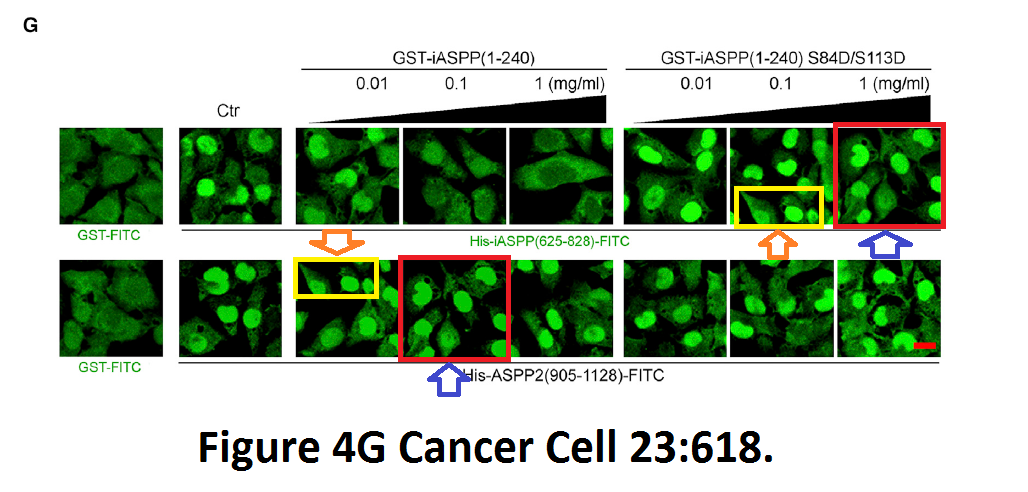
An Erratum was issued by Cell Press in 2016 and declared:
“This error does not affect any of the findings reported in the paper.”
With English research fabrications it is just like with Brexit: get over it, they won. Science is an English colony and the rotten upper classes are busy plundering it.

Donate!
If you are interested to support my work, you can leave here a small tip of $5. Or several of small tips, just increase the amount as you like (2x=€10; 5x=€25). Or you can donate to Barts or Ludwig centres for cancer research!
€5.00


Wow… Fortunately I am French (but it is the same here;-).
LikeLike
“Yet one St George-Hyslop coauthored publication was retracted in 2020. Its first author Sabine Wislet is professor in Belgium and has a number of other papers questioned on PubPeer, including another retraction.
Sabine Wislet-Gendebien, Cheryl D’Souza, Toshitaka Kawarai, Peter St George-Hyslop, David Westaway, Paul Fraser, Anurag Tandon Cytosolic proteins regulate alpha-synuclein dissociation from presynaptic membranes The Journal of biological chemistry (2006) doi: 10.1074/jbc.m605965200 ”
Sabine Wislet-Gendebien is professor in Belgium has 3 retractions.
http://retractiondatabase.org/RetractionSearch.aspx#?auth%3dWislet-Gendebien%252c%2bSabine
LikeLike
Sabine Wislet-Gendebien appears to have 5 retractions.
http://retractiondatabase.org/RetractionSearch.aspx#?auth%3dWislet-Gendebien%252c%2bSabine
LikeLike
How come the UK Research Intergity Office didn’t notice any of the problematic publications?
Many of the problematic publications have been reported to its staff member James Parry.
https://ukrio.org/
“Role and remit
UKRIO is an advisory body. We are not a regulatory organisation and have no formal legal powers. UKRIO fills gaps between jurisdictions, where no overall regulation might apply, and helps to direct researchers, organisations and the public to regulatory bodies when issues fall within their jurisdiction.
We help institutions achieve high standards when they have to manage challenges to research integrity and support individuals faced with bad practice. Our advice and guidance emphasises the good practice that runs across all research disciplines and all regulatory remits. In this way, our role complements that of regulatory bodies for research and supports the work of Government and research funders.”
“UKRIO fills gaps between jurisdictions, where no overall regulation might apply”
There is no regulatory organisation. How can the UKRIO fill the gaps where no overall regulation might apply when it writes itself “We are not a regulatory organisation” a few lines above.
In effect it hands out leaflets, but does not do anything. What is the point of this charity?
A few more people on the gravy train with their snouts in the public trough.
LikeLike
Br J Cancer. 1997;75(7):1028-34. doi: 10.1038/bjc.1997.176.
Treatment with inhibitors of polyamine biosynthesis, which selectively lower intracellular spermine, does not affect the activity of alkylating agents but antagonizes the cytotoxicity of DNA topoisomerase II inhibitors
M A Desiderio 1, D Bergamaschi, E Mascellani, P De Feudis, E Erba, M D’Incalci
Affiliations collapse
Affiliation
1Istituto di Patologia Generale, Università degli Studi di Milano, CNR,Milan, Italy.
PMID: 9083339 PMCID: PMC2222756 DOI: 10.1038/bjc.1997.176
Figure 3. Much more similar than expected.
https://pubpeer.com/publications/5B094D6A44C85F2888A9CE8A868DA4
https://imgur.com/viBnVvv
Br J Cancer couldn’t give a toss, but should it?
Editor-in-Chief Br J Cancer has his own neglected Pubpeer record.
https://www.nature.com/bjc/editors
Adrian Harris is the Cancer Research UK Professor of Medical Oncology at the University of Oxford and directs the Cancer Research UK Molecular Oncology Laboratories at the Weatherall Institute of Molecular Medicine (WIMM).
Adrian Harris’ Pubpeer record:-
https://pubpeer.com/publications/4D94E7F9528016B1E33624BDDB0E93
https://pubpeer.com/publications/59D384126BD8F65533528534EE1B10
https://pubpeer.com/publications/A11B0A80D6FCC4E8BA8800DCCB70E6
https://pubpeer.com/publications/8C50D94EA6492FB82D3B0FAFC7D53F
https://pubpeer.com/publications/D0416DEE1765CDA7EB4B860A62C5CA
https://pubpeer.com/publications/2384D3844A3367E8E0DECAC1682CA9
https://pubpeer.com/publications/20900B0DEE7D22D2447D931EAE7D42
https://pubpeer.com/publications/253D0FBEEA6F0C0099839F696AB938
LikeLike
Unsurprisingly, Bergamaschi is former colleague of Desiderio. Science fraud is a village.
https://forbetterscience.com/2019/09/16/alfonsina-desiderio-and-her-pathological-bully-boys/
LikeLike
Br J Cancer does not give a toss about polluting the scientific literature.
https://pubpeer.com/publications/3C214F7C44E6D22BD9F8FA367BD232
https://pubpeer.com/publications/3C214F7C44E6D22BD9F8FA367BD232#4
https://pubpeer.com/publications/3C214F7C44E6D22BD9F8FA367BD232#6
LikeLike
Wonders will never cease!
Br J Cancer retracts 2004 paper mentioned at Zebedee February 19, 2021 below !
Br J Cancer. 2004 Dec 13;91(12):2042-7. doi: 10.1038/sj.bjc.6602254.
Id-I stimulates cell proliferation through activation of EGFR in ovarian cancer cells
X Zhang 1, M-T Ling, H Feng, Y C Wong, S W Tsao, X Wang
Affiliation
1Cancer Biology Group, Department of Anatomy, The University of Hong Kong, 1/F, Faculty of Medicine Building, 21 Sassoon Road, Hong Kong.
PMID: 15599381 PMCID: PMC2409798 DOI: 10.1038/sj.bjc.6602254
Retraction Note to: British Journal of Cancer (2004) 91, 2042–2047; https://doi.org/10.1038/sj.bjc.6602254, published online 14 December 2004
The Editor-in-Chief has retracted this article because serious concerns have been raised about integrity of the data. Specifically:
Figure 1a—the Id-1 and Actin bands for the Skov3 panel appear to be very similar.
The Actin bands in the Ovca433 panel in Figure 1a seem very similar to the Actin bands for the Ovca433 panel in Figure 4a.
Figure 1a—it appears that some images have been published earlier with different labels by some of the same authors.1,2
In Figure 1b the Actin band for the Ovca420 panel and the Actin band for the Ovca432 panel seem to be mirror images.
The authors were unable to provide raw data. The data reported in this article are therefore unreliable.
S.W. Tsao agrees to this retraction. The editor was not able to obtain a current email address for X. Zhang, M.-T. Ling, H. Feng, Y.C. Wong and X. Wang.
References 1. Ling, M., Wang, X. S., Ouyang, X., Xu, K., Tsao, S. W. & Wong, Y. C. Id-1 expression promotes cell survival through activation of NF-kB signalling pathway in prostate cancer cells. Oncogene 22, 4498–4508, https://doi.org/10.1038/sj.onc.1206693 (2003).
2, Cheung, H. W., Ling, M.-t, Tsao, S. W., Wong, Y. C. & Wang, X. Id-1-induced Raf/MEK pathway activation is essential for its protective role against taxol-induced apoptosis in nasopharyngeal carcinoma cells. Carcinogenesis 25, 881–887, https://doi.org/10.1093/carcin/bgh087 (2004).
LikeLike
“The first author on that paper, Daniele Bergamaschi, is now lecturer at the Blizzard Institute at the Queen Mary University of London, the same university which runs Barts. ”
Another denizen of the Blizzard Institute at the Queen Mary University of London
https://www.qmul.ac.uk/blizard/all-staff/profiles/tom-macdonald.html
Professor Tom MacDonald, PhD FRCPath FMedSci
“He has served on many grant awarding panels and advisory groups and is currently a member of the review panel of NC3R’s, Action Medical Research, was a past member of PSMB at MRC (2007-11) and chairs the MRC non-clinical training panel, sits on the MRC training and careers panel, chairs the Mason Medical Foundation Awards panel and also chairs the Kings Health Partners Awards Panel. He is a co-investigator on an MRC Programme with Graham Lord from Kings College and receives support from Glaxo Smith Kline in the UK and USA, Janssen Pharmaceuticals, Grunenthal, VH2 and Topivert to develop new molecules to treat inflammatory bowel disease.”
Impressive Pubpeer record:
https://pubpeer.com/publications/672F4F8A70BFBC3BE050D774C71488
https://pubpeer.com/publications/03ED65961D0E5B83FEAC28BBD5BD4D
https://pubpeer.com/publications/7F8A877887CF4CA7CA96B10A75674D
https://pubpeer.com/publications/9D805B95C0D61C5C559B350ED10869
https://pubpeer.com/publications/65E51DC922E5C8D1853A284C81652E
https://pubpeer.com/publications/955A28B11F388331A0A51B0E03C4BB
https://pubpeer.com/publications/798054ACD94648BB3748E20D75B1EE
https://pubpeer.com/publications/4861C25530B30ABEE6AA025C746C3C
https://pubpeer.com/publications/EED4F09DE9438C380E169D4EC96E98
https://pubpeer.com/publications/E4C7771CBD8F9F54EEAB54CB39905A
https://pubpeer.com/publications/A98514FE2714F2F8063CED78D8516B
https://pubpeer.com/publications/8482F49638E7E61D86CD257354FAE4
https://pubpeer.com/publications/8F7F07118764E28B1F6F59B0D2B25B
https://pubpeer.com/publications/7063BE20879224A9DFA37D198D8639
https://pubpeer.com/publications/6ED16FD333575E90EF97F2B85FB81B
https://pubpeer.com/publications/3BD205655E0AB5927B48AB9B8DE393
https://pubpeer.com/publications/57FF58D9434D8A758AD55DDF168DEE
https://pubpeer.com/publications/90E0BB37F60D3AFBD7E66AFF778513
https://pubpeer.com/publications/E84EC20226D7032AAB99605FF45613
Queen Mary University of London has decided to do nothing.
LikeLike
J Exp Med. 2013 Mar 11;210(3):581-603. doi: 10.1084/jem.20121439. Epub 2013 Feb 18.
p63 is an alternative p53 repressor in melanoma that confers chemoresistance and a poor prognosis
Rubeta N Matin 1, Anissa Chikh, Stephanie Law Pak Chong, David Mesher, Manuela Graf, Paolo Sanza’, Valentina Senatore, Maria Scatolini, Francesca Moretti, Irene M Leigh, Charlotte M Proby, Antonio Costanzo, Giovanna Chiorino, Rino Cerio, Catherine A Harwood, Daniele Bergamaschi
Affiliations collapse
Affiliation
1Centre for Cutaneous Research, Blizard Institute, Barts and The London School of Medicine and Dentistry, Queen Mary University of London, London E1 2AT, England, UK.
PMID: 23420876 PMCID: PMC3600906 DOI: 10.1084/jem.20121439
Much more similar than expected.
Figure 4K.
https://pubpeer.com/publications/B5F23105E2819B01007B9485C13C2A#8
https://imgur.com/RwKe5lz
Figure 4G.
https://pubpeer.com/publications/B5F23105E2819B01007B9485C13C2A#9
https://imgur.com/LIWQTEx
LikeLike
J Cell Sci. 2014 Jul 15;127(Pt 14):3079-93. doi: 10.1242/jcs.144816. Epub 2014 Apr 28.
iASPP is a novel autophagy inhibitor in keratinocytes
Anissa Chikh 1, Paolo Sanzà 1, Claudio Raimondi 2, Olufolake Akinduro 1, Gary Warnes 3, Giovanna Chiorino 4, Carolyn Byrne 1, Catherine A Harwood 1, Daniele Bergamaschi 5
Affiliations
1Centre for Cutaneous Research, Blizard Institute, Barts and The London School of Medicine and Dentistry, Queen Mary University of London, London E1 2AT, UK.
2Centre for Diabetes, Blizard Institute, Barts and The London School of Medicine and Dentistry, Queen Mary University of London, London E1 2AT, UK.
3Flow Cytometry Core Facility, Blizard Institute, Barts and The London School of Medicine and Dentistry, Queen Mary University of London, London E1 2AT, UK.
4Cancer Genomic Laboratory, Edo ed Elvo Tempia Foundation, 13900 Biella, Italy.
5Centre for Cutaneous Research, Blizard Institute, Barts and The London School of Medicine and Dentistry, Queen Mary University of London, London E1 2AT, UK d.bergamaschi@qmul.ac.uk.
PMID: 24777476
Much more similar than expected.
https://pubpeer.com/publications/43FB16ED19FAEB3AEB42F460FFCC66#1
https://pubpeer.com/publications/43FB16ED19FAEB3AEB42F460FFCC66#2
LikeLike
EMBO J. 2011 Sep 6;30(20):4261-73. doi: 10.1038/emboj.2011.302.
iASPP/p63 autoregulatory feedback loop is required for the homeostasis of stratified epithelia
Anissa Chikh 1, Rubeta N H Matin, Valentina Senatore, Martin Hufbauer, Danielle Lavery, Claudio Raimondi, Paola Ostano, Maurizia Mello-Grand, Chiara Ghimenti, Adiam Bahta, Sahira Khalaf, Baki Akgül, Kristin M Braun, Giovanna Chiorino, Michael P Philpott, Catherine A Harwood, Daniele Bergamaschi
Affiliation
1Centre for Cutaneous Research, Blizard Institute, Barts and The London School of Medicine and Dentistry, London, UK.
Much more similar than expected.
https://pubpeer.com/publications/CC7F24A1577FB8CB457AF7D781ACD9#2
https://pubpeer.com/publications/CC7F24A1577FB8CB457AF7D781ACD9#3
https://pubpeer.com/publications/CC7F24A1577FB8CB457AF7D781ACD9#4
https://pubpeer.com/publications/CC7F24A1577FB8CB457AF7D781ACD9#5
https://pubpeer.com/publications/CC7F24A1577FB8CB457AF7D781ACD9#8
https://pubpeer.com/publications/CC7F24A1577FB8CB457AF7D781ACD9#9
Solution.https://pubpeer.com/publications/CC7F24A1577FB8CB457AF7D781ACD9#16
A good way of dispelling the similarities between the bands (and spacing between the bands) in the GAPDH panels in figures 2C and 4F in this paper and figure 1D J Cell Sci 127:3079 would be for the authors to post the original blots from these figures here. Neither paper is that old.
LikeLike
Continuation J Exp Med. 2013 Mar 11;210(3):581-603. doi: 10.1084/jem.20121439.
Figure 1E. Much more similar than expected.
LikeLike
Continuation J Exp Med. 2013 Mar 11;210(3):581-603. doi: 10.1084/jem.20121439. Epub 2013 Feb 18.
Figure 4G. Much more similar than expected.
Figure 4K. Much more similar than expected.
LikeLike
Glad to see you’re a Molesworth fan!
LikeLike
Uhm, no, just of Adrian Mole. But I know that quote 😉
LikeLike
“A key coauthor on all these papers is Yaohe Wang, another professor at Barts.”
https://www.bartscancer.london/staff/professor-yaohe-wang/
Section “Other activities.
“2006-present- Chief Scientific Officer, Sino-British Research Centre for Molecular Oncology, Zhengzhou University, China
Onco Targets Ther. 2018 Jun 6;11:3323-3333. doi: 10.2147/OTT.S157025. eCollection 2018.
Ablation of MCM10 using CRISPR/Cas9 restrains the growth and migration of esophageal squamous cell carcinoma cells through inhibition of Akt signaling
Jie Yan 1 2, Pan Du 3, Yongxu Jia 2, Zhiwei Chang 2, Silin Gan 4, Xiaohan Xu 5, Yaohe Wang 3, Yanru Qin 2, Quancheng Kan 1
Affiliations collapse
Affiliations
1Department of Gastroenterology, The First Affiliated Hospital of Zhengzhou University, Zhengzhou, China.
2Department of Oncology, The First Affiliated Hospital of Zhengzhou University, Zhengzhou, China.
3National Center for International Research in Cell and Gene Therapy, Sino-British Research Centre for Molecular Oncology, Zhengzhou University, Zhengzhou, China.
4Department of Hematology, The First Affiliated Hospital of Zhengzhou University, Zhengzhou, China.
5Department of Anesthesiology, The First Affiliated Hospital of Zhengzhou University, Zhengzhou, China.
PMID: 29922071
2019 retraction.
https://www.dovepress.com/retraction-ablation-of-mcm10-using-crisprcas9-restrains-the-growt-peer-reviewed-article-OTT
“Yan J, Du P, Jia Y, Chang Z, Gan S, Xu X, Wang Y, Qin Y, Kan Q. Ablation of MCM10 using CRISPR/Cas9 restrains the growth and migration of esophageal squamous cell carcinoma cells through inhibition of Akt signaling. Onco Targets Ther. 2018;11:3323–3333.
At the request of the author, the Editor-in-Chief and Publisher of OncoTargets and Therapy wish to retract the published article.
After carefully checking the original record, the authors noted that the images of representative wells for wild type and Clone 1 shown in Figure 3B had been inadvertently duplicated. Upon careful review it was found there was no significant difference between the number of clones on the wild type and Clone 1 samples. In the context of only one set of data, the authors cannot conclude without doubt that ablation of MCM10 reduces the colony formation of esophageal cancer cells. The authors wish to point out that all other findings reported in the article are still valid.
The authors wish to apologize for this error.”
https://pubpeer.com/publications/697407B3BB9B2337595E47FD7F1660#2
LikeLike
Dean of Academy of Medical Sciences (AMS) of Zhengzhou University
http://www5.zzu.edu.cn/yxkxy_e/About_Us/The_Dean_s_Profile.htm
Name: Nicholas Robert Lemoine
Field: Molecular Oncology, Gene Therapy and Translational Medicine
Title: Dean and Chief Executive
Professor of Molecular Oncology, University of London
Fellow of the Academy of Medical Sciences, UK
Fellow of the Royal College of Pathologists, UK
LikeLike
Nicholas Robert Lemoine
“I was given the Friendship Award by the Chinese government. In November2017,I was elected to be a Foreign Academician of Chinese Academy of Engineering.”
In the old tradition.https://forbetterscience.com/2018/05/22/cardiff-no-misconduct-by-tcm-professor-wen-jiang-report-secret/
Cardiff University’s President Colin Riordan should be ashamed of himself.
https://retractionwatch.com/2020/04/15/journals-have-retracted-or-flagged-more-than-40-papers-from-china-that-appear-to-have-used-organ-transplants-from-executed-prisoners/
https://www.amnesty.org/en/latest/news/2019/04/death-penalty-facts-and-figures-2018/ China remained the world’s leading executioner – but the true extent of the use of the death penalty in China is unknown as this data is classified as a state secret; the global figure of at least 690 excludes the thousands of executions believed to have been carried out in China.
https://www.bartscancer.london/staff/professor-nick-lemoine/
Biography
“I trained in medicine at St Bartholomew’s Hospital Medical College where I qualified with the University of London Gold Medal in 1983, specialising in pathology and oncology with posts in London and Cardiff.”
A medical doctor propping up “the world’s leading executioner”.
LikeLike
https://www.bartscancer.london/staff/professor-kairbaan-hodivala-dilke/https://pubpeer.com/publications/1C99530BADF652533747839443E044https://pubpeer.com/publications/363F43BCADB2EC5ECDF3FDA528D632https://pubpeer.com/publications/43B08AA200A3C469AC274AF8630D99#2
https://www.bartscancer.london/staff/professor-hemant-kocher/https://pubpeer.com/publications/F3B5459B9E834B979A85C38844F8CA#2https://pubpeer.com/publications/881104471F8FC645D61F1A6A815624
https://www.bartscancer.london/staff/dr-gunnel-hallden/https://pubpeer.com/publications/8514DC255B55848F407DB63E8228F6https://pubpeer.com/publications/16410BD255E583D34D1283B3F3A544https://pubpeer.com/publications/7404F159AF6AAB0EA3BBCEC3D95AF5https://pubpeer.com/publications/BB33AB1C5572A6EAAF5A34FAE42EABhttps://pubpeer.com/publications/5F7FDF806E5D0117356E85C8EBE042https://pubpeer.com/publications/6F4C2DA11A065E67FC11AC7E20A72E
LikeLike
Heads up for https://www.bartscancer.london/staff/professor-kairbaan-hodivala-dilke/
Re: https://pubpeer.com/publications/363F43BCADB2EC5ECDF3FDA528D632
First and senior authors of the above paper received this retraction a month ago.
https://pubpeer.com/publications/A8576C0A3E0681E6913774442D332B
LikeLike
PLoS One. 2010 Mar 22;5(3):e9766. doi: 10.1371/journal.pone.0009766.
Endothelial-Rac1 is not required for tumor angiogenesis unless alphavbeta3-integrin is absent
Gabriela D’Amico 1, Stephen D Robinson, Mitchel Germain, Louise E Reynolds, Gareth J Thomas, George Elia, Garry Saunders, Marcus Fruttiger, Victor Tybulewicz, Georgia Mavria, Kairbaan M Hodivala-Dilke
Affiliation
1
Adhesion and Angiogenesis Laboratory, Institute of Cancer, Bart’s and The London, Queen Mary’s School of Medicine and Dentistry, London, United Kingdom. gabriela.damico@helsinki.fi
PMID: 20339539 PMCID: PMC2842301 DOI: 10.1371/journal.pone.0009766
Problematic data figure 7B. Much more similar after horizontal flip.
LikeLike
https://www.bartscancer.london/staff/professor-victoria-sanz-moreno/
“Biography
I received my first degree in chemistry and later a masters degree in biochemistry from the University of Oviedo in Spain, followed by a PhD in chemical sciences at the University of Cantabria.”
Mol Cell Biol. 2009 Mar;29(5):1338-53. doi: 10.1128/MCB.01359-08. Epub 2008 Dec 29.
Ras subcellular localization defines extracellular signal-regulated kinase 1 and 2 substrate specificity through distinct utilization of scaffold proteins
Berta Casar 1, Imanol Arozarena, Victoria Sanz-Moreno, Adán Pinto, Lorena Agudo-Ibáñez, Richard Marais, Robert E Lewis, María T Berciano, Piero Crespo
Affiliations collapse
Affiliation
1Departamento de Biología Molecular, Instituto de Biomedicina y Biotecnología de Cantabria, Consejo Superior de Investigaciones Científicas-IDICAN-Universidad de Cantabria, Santander, 39011 Cantabria, Spain.
PMID: 19114553 PMCID: PMC2643815 DOI: 10.1128/MCB.01359-08
https://pubpeer.com/publications/B28C04E237ECA3441842687F0F2754
Figure 3F. Much more similar than expected.
LikeLike
RE: senior author Blood. 2007 Aug 15;110(4):1168-77, Sudhakar Yakkanti.
https://retractionwatch.com/2020/12/01/a-year-after-a-federal-misconduct-finding-a-cancer-researcher-loses-a-paper/
https://retractionwatch.com/2019/11/07/reused-over-and-over-again-image-recycling-leads-to-5-year-funding-ban-for-cancer-researcher/
Why is Blood so slow at retracting Blood. 2007 Aug 15;110(4):1168-77
https://pubpeer.com/publications/363F43BCADB2EC5ECDF3FDA528D632
or is Blood always that slow, and very rarely corrects the scientific literature?
LikeLike
https://www.bartscancer.london/staff/professor-victoria-sanz-moreno/
“Biography
I received my first degree in chemistry and later a masters degree in biochemistry from the University of Oviedo in Spain, followed by a PhD in chemical sciences at the University of Cantabria.”
Curr Biol. 2006 Oct 24;16(20):2042-7. doi: 10.1016/j.cub.2006.08.083.
Phosphorylation of p38 by GRK2 at the docking groove unveils a novel mechanism for inactivating p38MAPK
Sandra Peregrin 1, Maria Jurado-Pueyo, Pedro M Campos, Victoria Sanz-Moreno, Ana Ruiz-Gomez, Piero Crespo, Federico Mayor Jr, Cristina Murga
Affiliations collapse
Affiliation
1Departamento de Biología Molecular and Centro de Biología Molecular Severo Ochoa, Universidad Autónoma de Madrid, 28049 Madrid, Spain.
PMID: 17055984 DOI: 10.1016/j.cub.2006.08.083
https://pubpeer.com/publications/4F245967EE526FFADF60845F997F43
Figure 4A. Much more similar than expected.
https://pubpeer.com/publications/4F245967EE526FFADF60845F997F43#4
2018 correction.
https://www.cell.com/current-biology/fulltext/S0960-9822(18)30932-1?_returnURL=https%3A%2F%2Flinkinghub.elsevier.com%2Fretrieve%2Fpii%2FS0960982218309321%3Fshowall%3Dtrue
“In the preparation of the aforementioned article, two panels within Figure 4A were erroneously inserted twice, thus leading to incorrect labeling and duplications; this affected the images corresponding to 3T3L1 control (top left); 3T3L1-GRK2+insulin (middle left); L1+insulin+SB, an established p38 MAPK inhibitor (bottom left); and K220R+insulin+SB (bottom right). The corrected Figure 4A, presented below, now shows the appropriate panels and labels, in which the top left (undifferentiated 3T3L1 cell control) and the middle left (showing decreased differentiation by insulin in the presence of extra GRK2) panels within Figure 4A have been substituted for the correct ones. This change does not affect the conclusions of the paper in any way. The authors sincerely apologize to the readers for any confusion that may have resulted from this error.”
See:
https://forbetterscience.com/2018/07/04/another-dead-scientist-framed-with-manipulated-data/
LikeLike
https://www.bartscancer.london/staff/dr-paolo-gallipoli/
https://researchpublications.qmul.ac.uk//publications/staff/46985.html
Chen M, Gallipoli P, DeGeer D, Sloma I, Chan M, Lai D, Jorgensen H, Forrest D et al. ( 2011 ) . TARGETING A NOVEL AHI-1-BCR-ABL-JAK2 INTERACTION COMPLEX BY COMBINATION TREATMENT WITH ABL AND JAK2 INHIBITORS IS EFFECTIVE AGAINST CML PATIENTS’S LEUKEMIC STEM/PROGENITOR CELLS IN VITRO AND IN VIVO . EXPERIMENTAL HEMATOLOGY . vol. 39 , S18 – S18 .
https://pubpeer.com/publications/B6875B37398A7DA24C2043FCA8FBDE
Figure 3A. Much more similar than expected.
https://pubpeer.com/publications/B6875B37398A7DA24C2043FCA8FBDE#2
https://imgur.com/Gvd7iDU
LikeLike
PLoS One. 2013 Dec 3;8(12):e81575. doi: 10.1371/journal.pone.0081575. eCollection 2013.
Problematic data figure 5E. Much more similar than expected. See: https://imgur.com/XFZhRm6
RhoC interacts with integrin α5β1 and enhances its trafficking in migrating pancreatic carcinoma cells
Ningfeng Fiona Li 1, Emilios Gemenetzidis, Francis J Marshall, Derek Davies, Yongwei Yu, Kristopher Frese, Fieke E M Froeling, Adam K Woolf, Roger M Feakins, Yoshiki Naito, Christine Iacobuzio-Donahue,
David A Tuveson, Ian R Hart, Hemant M Kocher
Affiliation1Barts Cancer Institute – a CR-United Kingdom Centre of Excellence, Queen Mary University of London, Centre for Tumour Biology, London, United Kingdom.PMID: 24312560 PMCID: PMC3849283 DOI: 10.1371/journal.pone.0081575
Problematic data figure 5E. Much more similar than expected.
LikeLike
Clin Cancer Res. 2010 Oct 15;16(20):4928-37. doi: 10.1158/1078-0432.CCR-10-1210. Epub 2010 Sep 28.
Key role of phosphoinositide 3-kinase class IB in pancreatic cancer
Charlotte E Edling 1, Federico Selvaggi, Richard Buus, Tania Maffucci, Pierluigi Di Sebastiano, Helmut Friess, Paolo Innocenti, Hemant M Kocher, Marco Falasca
Affiliation1
Inositide Signalling Group, Centre for Diabetes, Blizard Institute of Cell and Molecular Science, Institute of Cancer, Barts and The London School of Medicine and Dentistry, Queen Mary University London, London, United Kingdom.PMID: 20876794 DOI: 10.1158/1078-0432.CCR-10-1210
Problematic data figure 3. p110beta and p110alpha panels do not look like they come from the same blot.
Akt and p473-Akt panels do not look like they come from the same blot.
p110beta, p110alpha and p473-Akt panels do not look like they come from the same blot as the Tubulin panel.
LikeLike
Gut. 2009 Feb;58(2):271-84. doi: 10.1136/gut.2008.159871. Epub 2008 Oct 13.
Ezrin interacts with cortactin to form podosomal rosettes in pancreatic cancer cells
H M Kocher 1, J Sandle, T A Mirza, N F Li, I R Hart
Affiliation
1Centre for Tumour Biology, Institute of Cancer and CR-UK Clinical Centre, Barts & The London School of Medicine & Dentistry, John Vane Science Centre, London, UK. hemant.kocher@cancer.org.uk
PMID: 18852256 DOI: 10.1136/gut.2008.159871
Figure 4D. Much more similar than expected.
https://pubpeer.com/publications/F3B5459B9E834B979A85C38844F8CA#2
LikeLike
BMC Cell Biol. 2012; 13: 5.
Published online 2012 Mar 17. doi: 10.1186/1471-2121-13-5
PMCID: PMC3329412
PMID: 22424110
β3-integrin is required for differentiation in OC-2 cells derived from mammalian embryonic inner ear
Ivan Brunetta,1 Stefano O Casalotti,corresponding author2 Ian R Hart,3 Andrew Forge,1 and Louise E Reynolds3
Author information
1Centre for Auditory Research, UCL Ear Institute, University College London, London WC1X 8EE, UK
2School of Health, Sport and Bioscience, University of East London, London E15 4LZ, UK
3Centre for Tumour Biology, Barts Cancer Institute, Queen Mary University of London, Charterhouse Square, London EC1M 6BQ, UK
corresponding authorCorresponding author.
Ivan Brunetta: ude.sppircs@attenurb; Stefano O Casalotti: ku.ca.leu@ittolasac.s; Ian R Hart: ku.ca.lumq@trah.i; Andrew Forge: ku.ca.lcu@egrof.a; Louise E Reynolds: ku.ca.lumq@sdlonyer.l
https://pubpeer.com/publications/23A7B098EA5D0850A03650A5A45946
LikeLike
” I suspect the Cambridge University probably has same statute of limitations on research fraud as Oxford, of 3 years.”
https://surgery.medschl.cam.ac.uk/staff/mr-siong-liau/
“He was also previously the International Hepatopancreatobiliary Association (IHPBA) Kenneth Warren Fellow at the Department of Surgery, Brigham and Women’s Hospital, Harvard Medical School, USA…”
Problematic publications at Harvard,https://pubpeer.com/search?q=liau+whang
https://pubpeer.com/publications/1BF4B4664D3A825B5D9EA17DF49B34
https://pubpeer.com/publications/02205EED31E0F6862F5B0F36A09F29
https://pubpeer.com/publications/A1E5C934DA1F64343C6C0390E664FF
https://pubpeer.com/publications/B42777A892F149DC3169685B9426A3
https://pubpeer.com/publications/D6EB2C200D08BDC2A89CA92AC84DAB
https://pubpeer.com/publications/8046B6B807FBF07BA73608DDA0B5C6
FYI: Edward E Whang.https://www.dfhcc.harvard.edu/insider/member-detail/member/edward-e-whang-md/
Problematic publications.https://pubpeer.com/search?q=edward+whang
LikeLike
Oncogene. 2009 Feb 5;28(5):773-80. doi: 10.1038/onc.2008.412. Epub 2008 Nov 10.
A novel function of colony-stimulating factor 1 receptor in hTERT immortalization of human epithelial cells
N F Li 1, H M Kocher, M A Salako, E Obermueller, J Sandle, F Balkwill
Affiliation
1The Centre for Cancer and Inflammation, Institute of Cancer and the Cancer Research-UK Clinical Centre, Barts and The London School of Medicine and Dentistry, London, UK.
PMID: 18997822
DOI: 10.1038/onc.2008.412
Figure 4a.
https://pubpeer.com/publications/881104471F8FC645D61F1A6A815624#1
Is there an explanation?
LikeLike
To be fair to Siong-Seng Liau, Cambridge, England,
Mark Duxbury, Glasgow, Scotland,
has many more problematic publications with Edward E Whang, Harvard than Siong-Seng Liau does.
Problematic publications.
https://pubpeer.com/search?q=duxbury
Presently: https://www.markduxbury.info/
https://www.markduxbury.info/publications
LikeLike
“As it happens, Ashworth’s mentee and first author on a bunch of hilariously fake papers, Sarah Martin, is presently faculty member and Deputy Centre Lead at the Lemoine-ruled Bart’s and, this is really cruel: director of the graduate school.”
Heard that one before.
https://forbetterscience.com/2017/10/13/after-misconduct-investigation-irina-stancheva-left-edinburgh-in-secret/
“In 2016, Stancheva was awarded a new MRC research grant running until 2019 and worth over half a million pounds. She was placed in charge of Graduate School which is funded by Research Councils UK until 2023 with GBP 7.5 Million. “
LikeLike
“Iman El-Hariry, Massimo Pignatelli, Nicholas R. Lemoine FGF-1 and FGF-2 regulate the expression of E-cadherin and catenins in pancreatic adenocarcinoma International Journal of Cancer (2001) DOI: 10.1002/ijc.1515”
Br J Cancer. 1999 May;80(3-4):322-30. doi: 10.1038/sj.bjc.6690358.
Abnormal expression and function of the E-cadherin-catenin complex in gastric carcinoma cell lines
A U Jawhari 1, M Noda, M J Farthing, M Pignatelli
Affiliations expand
PMID: 10408833 PMCID: PMC2362351 DOI: 10.1038/sj.bjc.6690358
https://pubpeer.com/publications/E4BB926D38ADE0005E9F96865D1ABA
2014 correction.
https://www.nature.com/articles/bjc2014615
It has been brought to our attention that there is a possible error in Figure 5 of the above paper whereby the western blot panel for beta-catenin representing the two cell lines MKN45 and MKN7 cells is identical. On inspection we agree with this observation, which is clearly an error on our part and which was also missed during the peer review process. Unfortunately we are unable to access the original gels and it is therefore not possible to offer the journal a full corrigendum, but nevertheless we feel it is important to acknowledge the error and formally put it on the record.
Figure 5 in this paper represents our study of the linkage between E-cadherin and beta-catenin in these cell lines. Previous (Shibamoto et al, 1994) and subsequent publications (Ono et al, 2004; Atsumi et al, 2007) looking at the E-cadherin–catenin complex in these cell lines have shown concordant results with the conclusions of our paper, where we show that despite the similar expression and interaction of the E-cadherin and beta-catenin in both cell lines, cell to cell adhesion characteristics are different. Other authors have proposed this to be due to other factors influencing cell–cell adhesion, such as differences in tyrosine phosphorylation levels of these proteins. Our paper is purely descriptive and our findings are supported by other publications in the field. We therefore conclude that this error in Figure 5 does not alter interpretation of the findings of our paper.
We have scrutinised the other data and images in the paper and can confidently confirm that there are no further errors or inaccuracies.
This note has been approved by all the authors below:
Current addresses: Aida U Jawhari, Queens Medical Centre, Nottingham, UK
Michael JG Farthing, Vice-Chancellor, Sussex House, University of Sussex, Brighton, UK
Massimo Pignatelli, Nazarbayev University Astana, Kazakhstan
“Unfortunately we are unable to access the original gels and it is therefore not possible to offer the journal a full corrigendum, but nevertheless we feel it is important to acknowledge the error and formally put it on the record.”
“Our paper is purely descriptive and our findings are supported by other publications in the field. We therefore conclude that this error in Figure 5 does not alter interpretation of the findings of our paper.”
LikeLike
FYI: Astana experienced a name change in 2019.
https://en.wikipedia.org/wiki/Nur-Sultan
LikeLike
Another English traditional. Down the pub on early Friday night for 2-for-1s.
Philos Trans R Soc Lond B Biol Sci . 1984 Dec 4;307(1132):271-82. doi: 10.1098/rstb.1984.0127.
DNA sequences required for regulated expression of beta-globin genes in murine erythroleukaemia cells
S Wright, E deBoer, A Rosenthal, R A Flavell, F Grosveld
PMID: 6151697 DOI: 10.1098/rstb.1984.0127
Erratum in
Philos Trans R Soc Lond B Biol Sci. 2012 Nov 5;367(1605):3059
https://royalsocietypublishing.org/doi/full/10.1098/rstb.2012.0385
Published:05 November 2012https://doi.org/10.1098/rstb.2012.0385
Phil. Trans. R. Soc. Lond. B307, 271–282 (24 December 1984) (doi:10.1098/rstb.1984.0127)
“After the publication of this article, it was brought to the attention of the editors of Phil. Trans. R. Soc. B that this article contains substantial content which was included in a previously published article [1], without referencing the prior publication.”
Reference.
Wright S., Rosenthal A., Flavell R.& Grosveld F.. 1984DNA sequences required for regulated expression of beta-globin genes in murine erythroleukemia cells. Cell 38, 265–273.
Most of the western blots appear in both articles.
LikeLike
Blood. 2009 Jun 18;113(25):6498-9; author reply 6499-500. doi: 10.1182/blood-2009-02-203174.
p73, miR106b, miR34a, and Itch in chronic lymphocytic leukemia
Pia Rivetti di Val Cervo, Paola Tucci, Aneela Majid, Anna Maria Lena, Massimiliano Agostini, Sergio Bernardini, Eleonora Candi, Gerry Cohen, Pierluigi Nicotera, Martin J S Dyer, Gerry Melino
PMID: 19541840 DOI: 10.1182/blood-2009-02-203174
https://ashpublications.org/blood/article/113/25/6498/25711/p73-miR106b-miR34a-and-Itch-in-chronic-lymphocytic
Correspondence: Prof Gerry Melino or Martin J. S. Dyer, MRC-Toxicology Unit, Hodgkin Bldg, PO Box 138, University of Leicester, Lancaster Rd, Leicester, LE1 9HN United Kingdom; e-mail: gm89@le.ac.uk or mjsd1@le.ac.uk.
Problematic data figure 1C.
https://pubpeer.com/publications/9EAE86ADF44EEB4CACC392CD08C749#2
https://imgur.com/v8bkWKt
2015 correction.
https://ashpublications.org/blood/article/125/24/3823/34031/Rivetti-di-Val-Cervo-P-Tucci-P-Majid-A-et-al-p73
“On page 6499 in the 18 June 2009 issue, there is an error in Figure 1C. The western blots are assembled incorrectly, featuring the same actin panel twice. Furthermore, the Itch panels are shifted. To further support the scientific conclusions, the authors repeated all experiments (Figure 2C, shown below), confirming the original results (corrected Figure 1C, shown below). Although the error does not change the scientific meaning, the authors apologize for the error.”
“Although the error does not change the scientific meaning, the authors apologize for the error.”
https://humantechnopole.it/en/people/gerry-melino/
https://www.mrc-tox.cam.ac.uk/news/gerry-melino-awarded-deans-award-medicine-neuroscience
” I suspect the Cambridge University probably has same statute of limitations on research fraud as Oxford, of 3 years.”
Gerry Melino at Pubpeer: https://pubpeer.com/search?q=melino
LikeLike
“Han Hsi Wong, Guozhong Jiang, Rathi Gangeswaran, Pengju Wang, Jiwei Wang, Ming Yuan, Hexiao Wang, Vipul Bhakta, Heike Müller, Nicholas R Lemoine, Yaohe Wang Modification of the early gene enhancer-promoter improves the oncolytic potency of adenovirus 11 Molecular therapy (2012) doi: 10.1038/mt.2011.242”
Additional problematic data.
Figure 4d. Much more similar than expected.
Already mentioned. Figures 4d and 6b.
https://pubpeer.com/publications/79C10FCB7F35089F52CD952E16B7CA#1
LikeLike
“Emma Spurrell, Rathi Gangeswaran, Pengju Wang, Fengyu Cao, Dongling Gao, Baisui Feng, William Wold, Ann Tollefson, Nicholas R Lemoine, Yaohe Wang
STAT1 interaction with E3-14.7K in monocytes affects the efficacy of oncolytic adenovirus
Journal of Virology (2014) doi: 10.1128/jvi.02829-13 ”
2017 correction.
J Virol. 2017 Oct 15; 91(20): e00670-17.Published online 2017 Sep 27. doi: 10.1128/JVI.00670-17PMCID: PMC5625500PMID: 28956778
Correction for Spurrell et al., “STAT1 Interaction with E3-14.7K in Monocytes Affects the Efficacy of Oncolytic Adenovirus”
Emma Spurrell,a Rathi Gangeswaran,a Pengju Wang,b Fengyu Cao,b Dongling Gao,b Baisui Feng,b William Wold,c Ann Tollefson,c Nicholas R. Lemoine,a,b and Yaohe Wanga,b
Author information Copyright and License information Disclaimer
a Centre for Molecular Oncology, Barts Cancer Institute, Queen Mary University of London, London, United Kingdom
b Sino-British Research Centre for Molecular Oncology, The First Affiliated Hospital of Zhengzhou University, Zhengzhou, China
c Department of Molecular Microbiology and Immunology, Saint Louis University School of Medicine, Saint Louis, Missouri, USA
Citation Spurrell E, Gangeswaran R, Wang P, Cao F, Gao D, Feng B, Wold W, Tollefson A, Lemoine NR, Wang Y. 2017. Correction for Spurrell et al., “STAT1 interaction with E3-14.7K in monocytes affects the efficacy of oncolytic adenovirus.” J Virol 91:e00670-17. https://doi.org/10.1128/JVI.00670-17.
This corrects the article “STAT1 Interaction with E3-14.7K in Monocytes Affects the Efficacy of Oncolytic Adenovirus” in volume 88 on page 2291.
Problematic data. J Virol. 2017 Oct 15; 91(20): e00670-17.
Corrected figures 2B and 3B much more similar than expected after horizontal flip.
LikeLike
Clin Cancer Res. 2020 Jan 15;26(2):465-476. doi: 10.1158/1078-0432.CCR-19-1395. Epub 2019 Nov 25.
A Virus-Infected, Reprogrammed Somatic Cell-Derived Tumor Cell (VIReST) Vaccination Regime Can Prevent Initiation and Progression of Pancreatic Cancer
Shuangshuang Lu 1, Zhe Zhang 1, Pan Du 1, Louisa S Chard 2, Wenli Yan 1, Margueritte El Khouri 2, Zhizhong Wang 1, Zhongxian Zhang 1, Yongchao Chu 1, Dongling Gao 1, Qinxian Zhang 3, Lirong Zhang 3, Ai Nagano 2, Jun Wang 2, Claude Chelala 2, Jing Liu 4 5, Jiekai Chen 4 5, Pentao Liu 6, Yunshu Dong 7, Shengdian Wang 7, Xiaozhu Li 7, Jianzeng Dong 8, Nick R Lemoine 1 2, Duanqing Pei 9 5, Yaohe Wang 10 2
Affiliations
1National Center for International Research in Cell and Gene Therapy, Sino-British Research Centre for Molecular Oncology, Academy of Medical Sciences, Zhengzhou University, Zhengzhou, China.
2Centre for Molecular Oncology, Barts Cancer Institute, Queen Mary University of London, London, United Kingdom.
3School of Basic Medical Sciences, Academy of Medical Sciences, Zhengzhou University, Zhengzhou, China.
4CAS Key Laboratory of Regenerative Biology, South China Institute for Stem Cell Biology and Regenerative Medicine, Guangzhou Institutes of Biomedicine and Health, Chinese Academy of Sciences, Guangzhou, Guangzhou, China.
5Guangzhou Regenerative Medicine and Health Guangdong Laboratory, Guangzhou, China.
6School of Biomedical Sciences, Li Ka Shing Faculty of Medicine, The University of Hong Kong, Hong Kong, China.
7CAS Key Laboratory of Infection and Immunity, Institute of Biophysics, Chinese Academy of Sciences, Beijing, China.
8Department of Cardiology, Beijing Anzhen Hospital, Capital Medical University, Beijing, China.
9CAS Key Laboratory of Regenerative Biology, South China Institute for Stem Cell Biology and Regenerative Medicine, Guangzhou Institutes of Biomedicine and Health, Chinese Academy of Sciences, Guangzhou, Guangzhou, China. Yaohe.wang@qmul.ac.uk Pei_duanqing@gibh.ac.cn.
10National Center for International Research in Cell and Gene Therapy, Sino-British Research Centre for Molecular Oncology, Academy of Medical Sciences, Zhengzhou University, Zhengzhou, China. Yaohe.wang@qmul.ac.uk Pei_duanqing@gibh.ac.cn.PMID: 31767564 DOI: 10.1158/1078-0432.CCR-19-1395
Problematic data figure 3A. Much more similar than expected.
https://imgur.com/3sbdWIm
LikeLike
More problematic data figure 3A Clin Cancer Res. 2020 Jan 15;26(2):465-476.
LikeLike
Yet more problematic data Clin Cancer Res. 2020 Jan 15;26(2):465-476.
Thanks to Actinopolyspora Biskrensis for spotting it.
Figure 2E. Much more similar than expected.
https://pubpeer.com/publications/2CF10357FD9372276AEAA97D7F2C35#3
LikeLike
Oncogene. 2007 Dec 6;26(55):7709-14. doi: 10.1038/sj.onc.1210580. Epub 2007 Jul 2.
Functional inhibition of PI3K by the betaGBP molecule suppresses Ras-MAPK signalling to block cell proliferation
V Wells 1, J Downward, L Mallucci
Affiliation
1Cell Signalling and Growth Laboratory, Pharmaceutical Science Research Division, King’s College London, London, UK.
PMID: 17603562 DOI: 10.1038/sj.onc.1210580
Figure 4c. Much more similar than expected.
https://pubpeer.com/publications/8BF0AE6D785C404F9ED363C590DD95#2
LikeLike
Mol Biol Cell. 2006 Sep;17(9):3729-44. doi: 10.1091/mbc.e05-11-1083. Epub 2006 Jun 14.
Phosphoinositide 3-Kinase C2beta regulates cytoskeletal organization and cell migration via Rac-dependent mechanisms
Roy M Katso 1, Olivier E Pardo, Andrea Palamidessi, Clemens M Franz, Marin Marinov, Angela De Laurentiis, Julian Downward, Giorgio Scita, Anne J Ridley, Michael D Waterfield, Alexandre Arcaro
Affiliation
1Ludwig Institute for Cancer Research, Royal Free and University College Hospital Medical School, London W1W 7BS, United Kingdom.
PMID: 16775008 PMCID: PMC1593155 DOI: 10.1091/mbc.e05-11-1083
Figure 2B. Much more similar after vertical stretch and mirror imaging.
https://pubpeer.com/publications/9E787A8D4D00A13B2521A241B42B99#2
Figure 1A. Much more similar than expected.
https://pubpeer.com/publications/9E787A8D4D00A13B2521A241B42B99#16
LikeLike
Mol Cell Biol. 1999 Sep;19(9):6427-40. doi: 10.1128/mcb.19.9.6427.
Functional analysis of H-Ryk, an atypical member of the receptor tyrosine kinase family
R M Katso 1, R B Russell, T S Ganesan
Affiliation
1Molecular Oncology Laboratories, Imperial Cancer Research Fund, Institute of Molecular Medicine, John Radcliffe Hospital, Headington, Oxford OX3 9DS, United Kingdom.
PMID: 10454588 PMCID: PMC84612 DOI: 10.1128/mcb.19.9.6427
Much more similar than expected.
Figure 2B.https://pubpeer.com/publications/80B993ECD687945AA6EB3F996AA084#7
Figure 4C.https://pubpeer.com/publications/80B993ECD687945AA6EB3F996AA084#2
Figure 6A.https://pubpeer.com/publications/80B993ECD687945AA6EB3F996AA084#3
Figure 6C.https://pubpeer.com/publications/80B993ECD687945AA6EB3F996AA084#4
Figure 7B.https://pubpeer.com/publications/80B993ECD687945AA6EB3F996AA084#5
Figure 8A.https://pubpeer.com/publications/80B993ECD687945AA6EB3F996AA084#6
LikeLike
” I suspect the Cambridge University probably has same statute of limitations on research fraud as Oxford, of 3 years.”
https://medgen.medschl.cam.ac.uk/professor-eamonn-maher/
“Prior to taking up this post in 2013 he was Professor of Medical Genetics and Academic Lead for the Centre for Rare Diseases and Personalised Medicine at the University of Birmingham.”
Cancer Res. 2002 Jul 1;62(13):3803-11.
Identification of cyclin D1 and other novel targets for the von Hippel-Lindau tumor suppressor gene by expression array analysis and investigation of cyclin D1 genotype as a modifier in von Hippel-Lindau disease
Malgorzata Zatyka 1, Nancy Fernandes da Silva, Steven C Clifford, Mark R Morris, Michael S Wiesener, Kai-Uwe Eckardt, Richard S Houlston, Frances M Richards, Farida Latif, Eamonn R Maher
Affiliation
1Section of Medical and Molecular Genetics, Department of Pediatrics and Child Health, University of Birmingham, The Medical School, Edgbaston, United Kingdom.
2015 correction.
https://cancerres.aacrjournals.org/content/75/18/3993
Correction: Identification of Cyclin D1 and Other Novel Targets for the von Hippel–Lindau Tumor Suppressor Gene by Expression Array Analysis and Investigation of Cyclin D1 Genotype as a Modifier in von Hippel–Lindau Disease
DOI: 10.1158/0008-5472.CAN-15-2009 Published September 2015
“In this article (Cancer Res 2002;62:3803–11), which appeared in the July 1, 2002, issue of Cancer Research (1), there appears to be an error in Fig. 3C relating to the expression of cyclin D1 and β-actin mRNA expression in normoxia and hypoxia in HEK293 cells: the loading control bands for β-actin that appear below the cyclin D1 bands are similar to the latter, and in the preparation of the figure the cyclin D1 band images may have been accidentally duplicated and thought to be β-actin bands. Although the identity of the cyclin D1 images has been confirmed recently, the original β-actin images cannot be found. Therefore, the authors have replaced the relevant β-actin bands in Fig. 3C with images for 28S rRNA staining from the gel used for the Northern blot. These confirm equal loading of the relevant RNA samples. The figure legend has been changed to include reference to the 28S rRNA loading controls.
These changes do not alter the original scientific conclusions, and the validity of the result remains the same.”
N,B,
“Although the identity of the cyclin D1 images has been confirmed recently, the original β-actin images cannot be found.”
“These changes do not alter the original scientific conclusions, and the validity of the result remains the same.”
Pubpeer record, Eamonn Maher.
https://pubpeer.com/search?q=eamonn+maher
Frequent co-author, Farida Latif
https://pubpeer.com/search?q=farida+latif
https://www.ppu.mrc.ac.uk/news/luke-hesson-house-lords
“Luke Hesson, who recently joined Philip Cohen’s Group as a postdoc, visited the House of Lords on 8 June 2005 as a member of the research team at the University of Birmingham, who received the “Team of the Year 2004″ award from the Breast Cancer Campaign.
This award is granted to the research team who have been most successful in publishing and presenting the results of their research, and for their continued commitment into researching the cure for breast cancer. One of the main interests of the team, led by Professor Farida Latif , is the study of the RASSF family of tumour suppressor genes, which are proapoptotic K-ras effectors. As part of this team Luke Hesson helped to identify interacting partners of the tumour suppressor gene RASSF1A. He then went on to identify, clone and characterise other members of the RASSF gene family and found that several, like RASSF1A, were inactivated by promoter DNA hypermethylation in several forms of cancer, including breast cancer. In an effort to understand the roles of these other RASSF members in tumourigenesis he then went on to investigate their function using the yeast two-hybrid system. His research provides possible diagnostic markers for early detection of a range of cancers as well as identifying therapeutic targets for the inhibition of cancer cell growth.
Wed 08th Jun 2005”
LikeLike
2022 retraction for Jesus Gil, MRC.
“Retraction Note: CBX7 controls the growth of normal and tumor-derived prostate cells by repressing the Ink4a/Arf locus – PubMed” https://pubmed.ncbi.nlm.nih.gov/36253447/
LikeLike
” I suspect the Cambridge University probably has same statute of limitations on research fraud as Oxford, of 3 years.”
https://www.cardiovascular.cam.ac.uk/directory/mashcroft
https://forbetterscience.com/2019/11/01/the-crooks-of-cruk/#comment-65692
“Margaret Ashcroft writes:
”Clearly, we need to resolve this as soon as possible before any further action is taken.””
Why should no action be taken?
The paper is highly problematic.
https://pubpeer.com/publications/B518680DD43B568C9DA7F41F9BBE54
LikeLike
J Cell Biol. 1999 Jun 28;145(7):1511-20. doi: 10.1083/jcb.145.7.1511.
The dynamics of protein kinase B regulation during B cell antigen receptor engagement
E Astoul 1, S Watton, D Cantrell
Affiliation
1Lymphocyte Activation Laboratory, Imperial Cancer Research Fund, London WC2A 3PX, United Kingdom.
PMID: 10385529 PMCID: PMC2133167 DOI: 10.1083/jcb.145.7.1511
Is this how you do dose responses? There are only 3 lanes.
https://pubpeer.com/publications/DAE472662629126D02A304491139CC
LikeLike
Cancer Res. 2005 Mar 15;65(6):2179-85. doi: 10.1158/0008-5472.CAN-03-4030.
Immortalization of primary human prostate epithelial cells by c-MycJesús Gil 1, Preeti Kerai, Matilde Lleonart, David Bernard, Juan Cruz Cigudosa, Gordon Peters, Amancio Carnero, David Beach
Affiliation1
Molecular Oncology Laboratory, Cancer Research UK, London Research Institute, United Kingdom. jesus.gil@cancer.org.ukPMID: 15781629 DOI: 10.1158/0008-5472.CAN-03-4030
Problematic data figure 1B. Much more similar than expected.
LikeLike